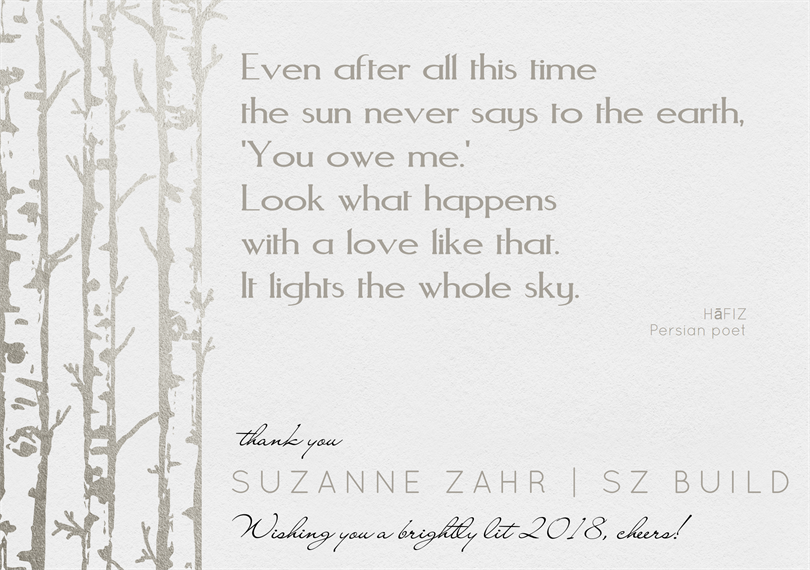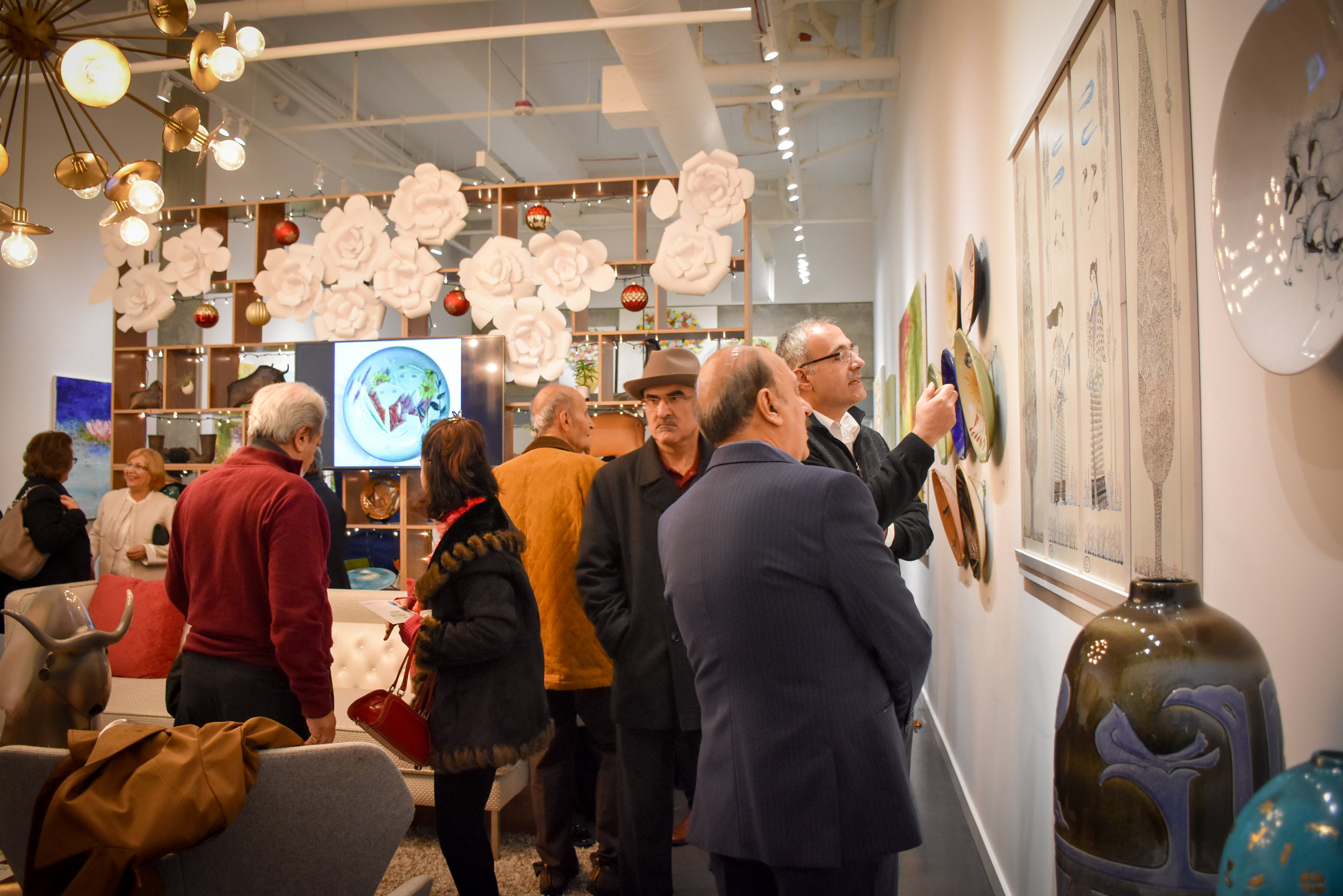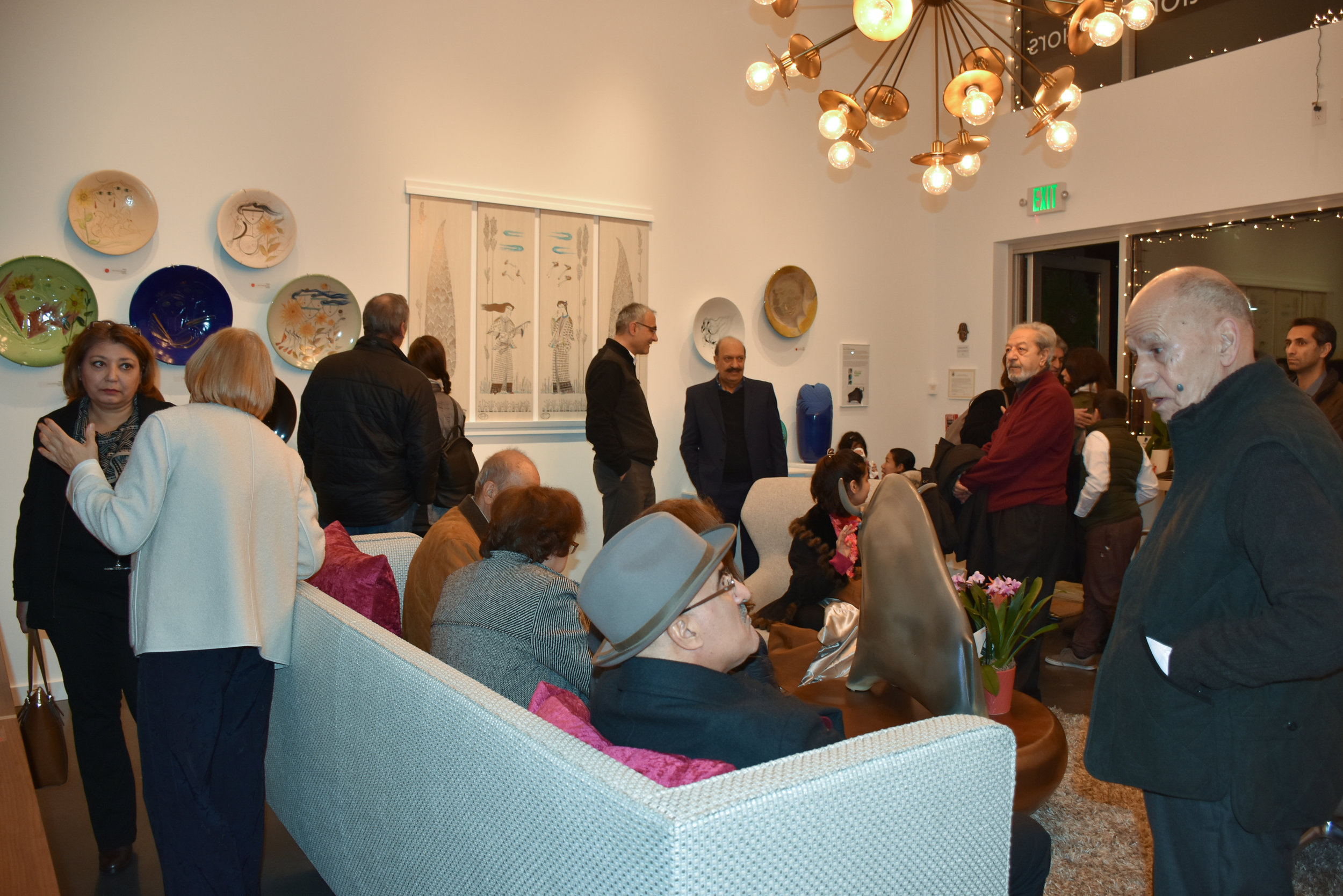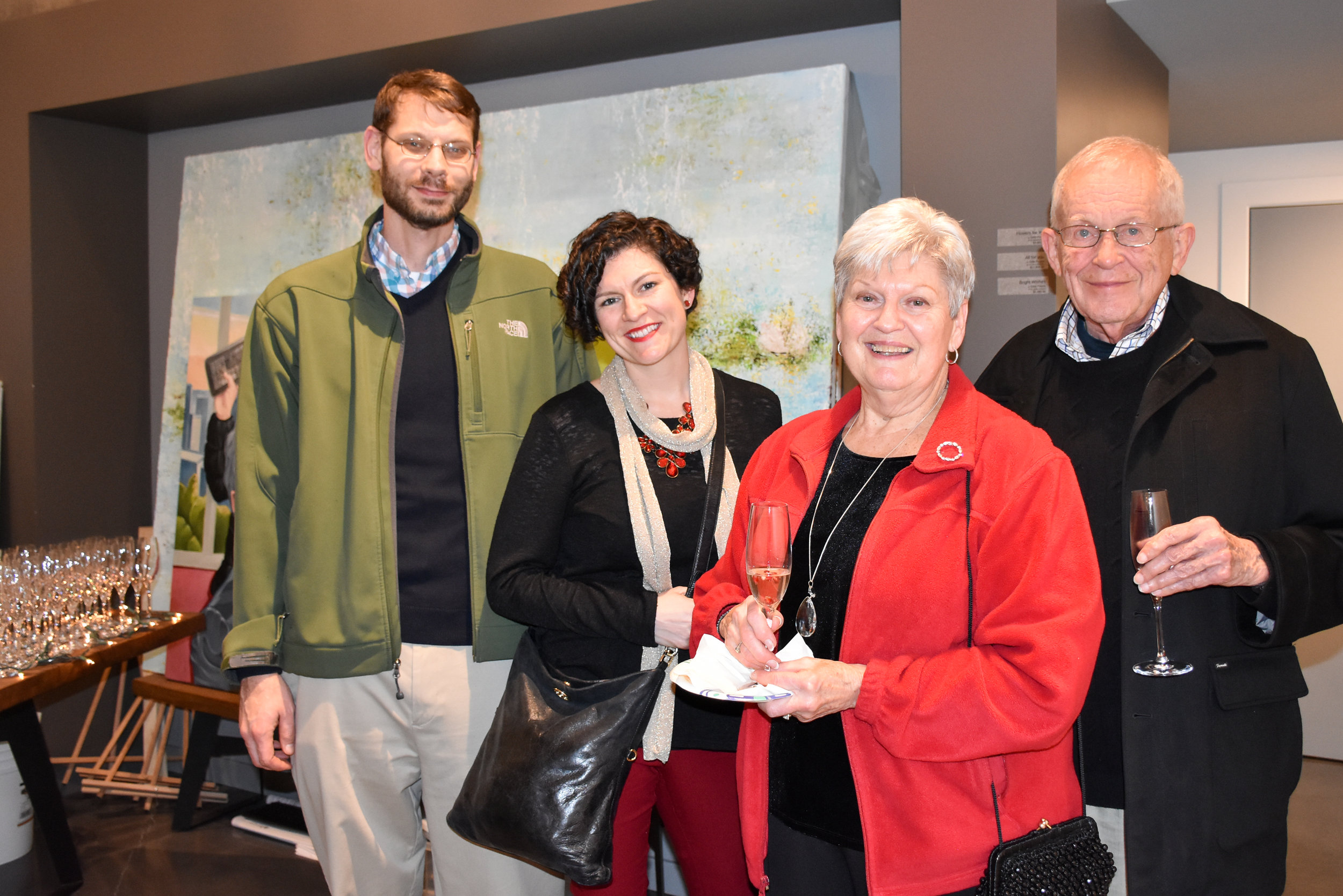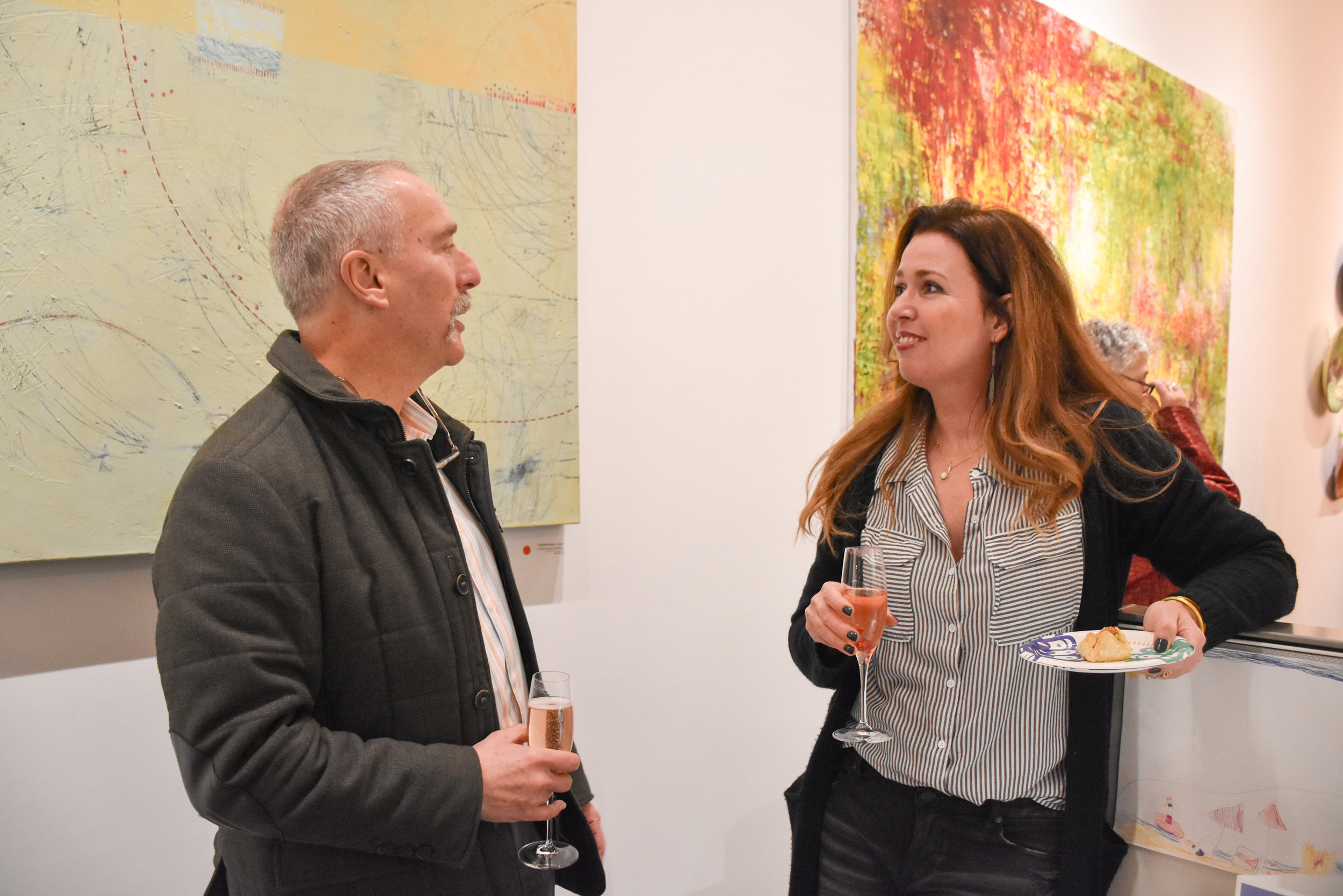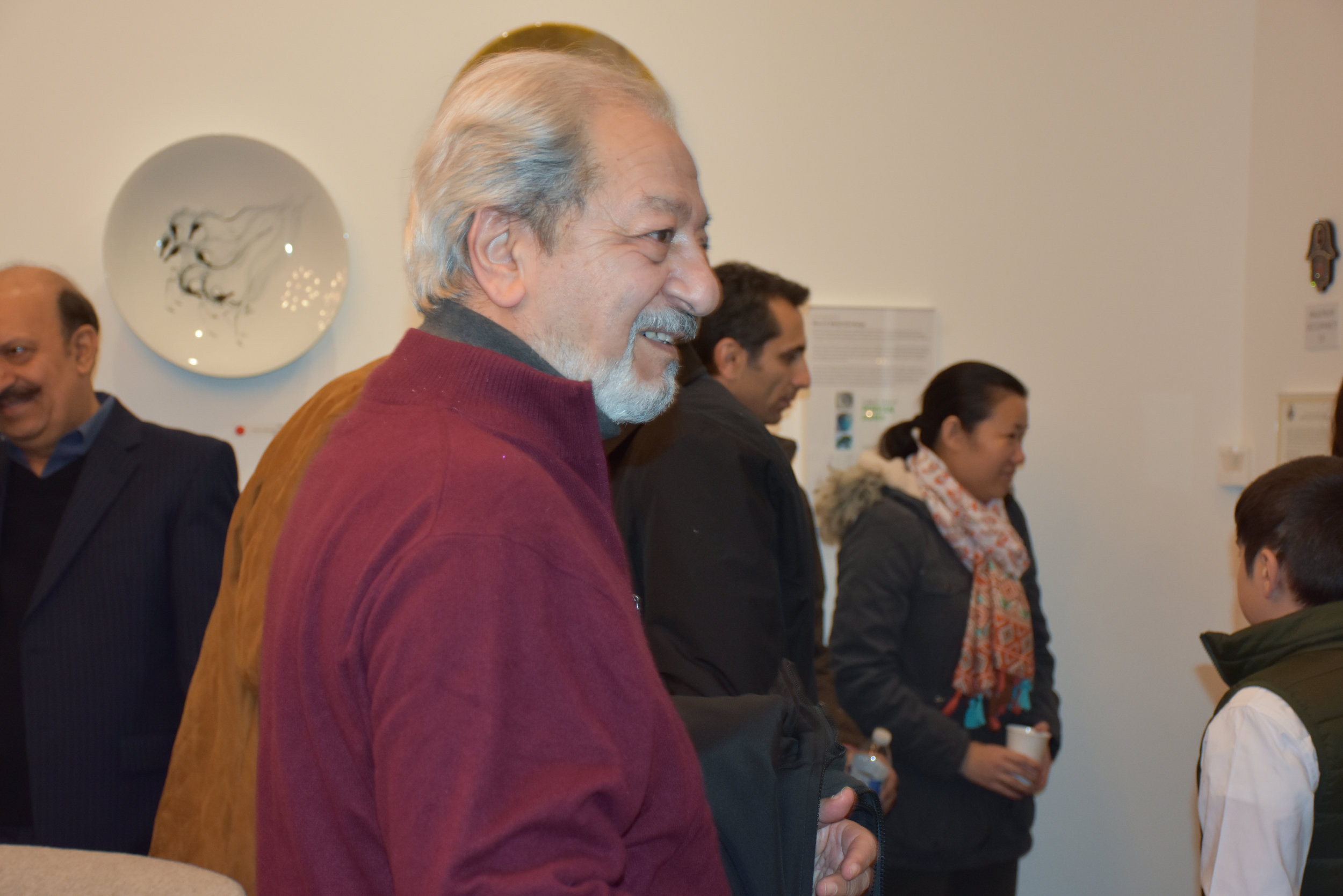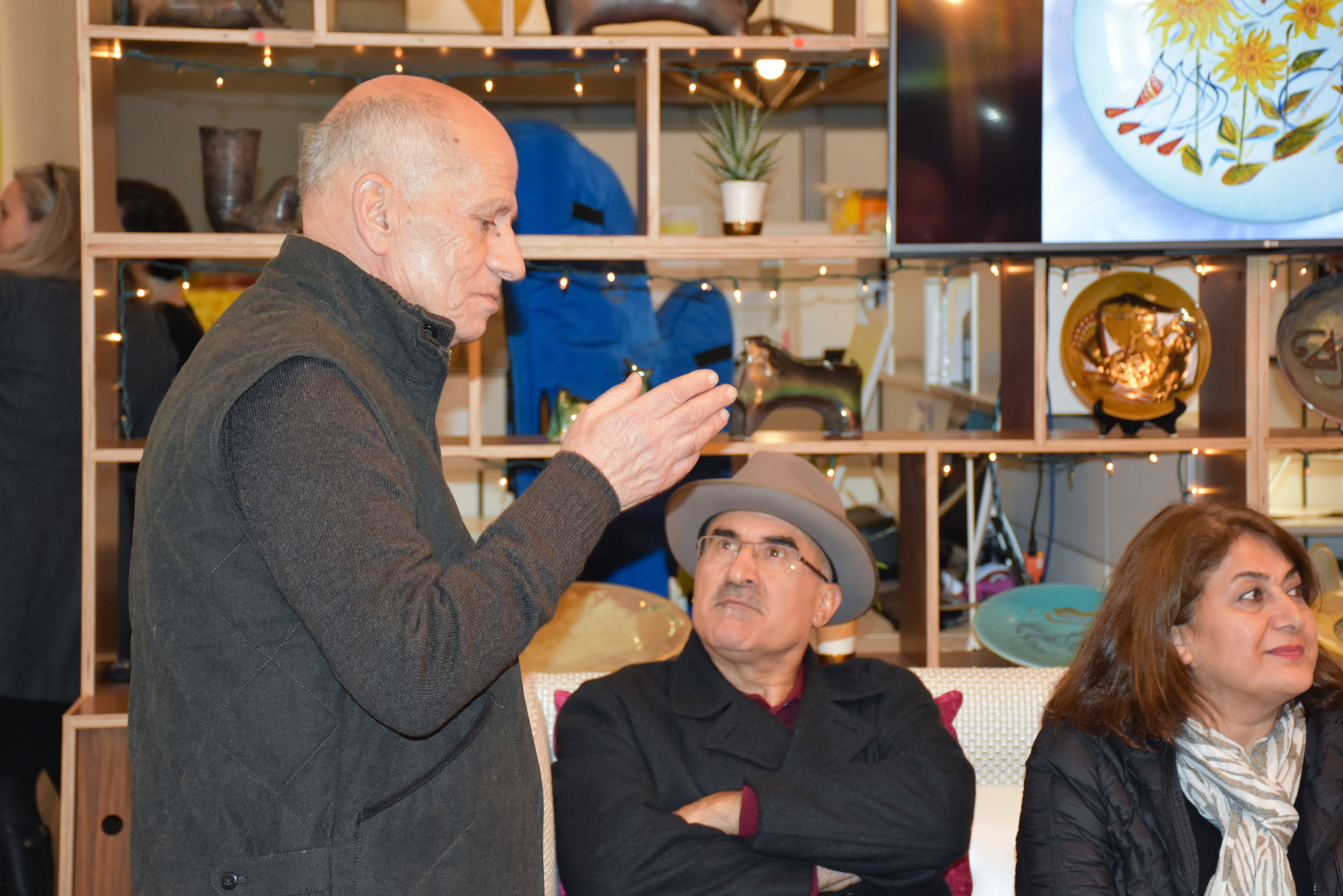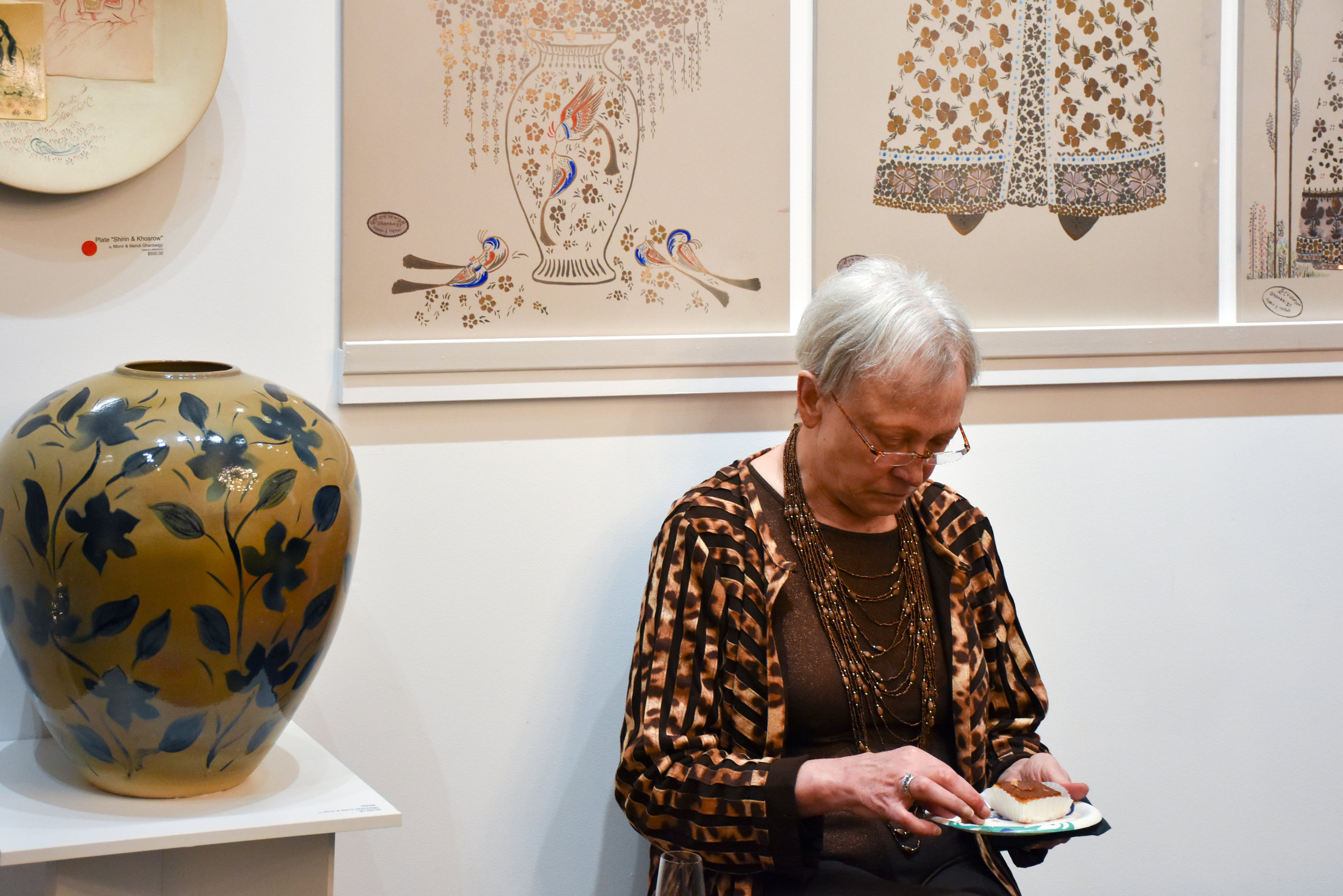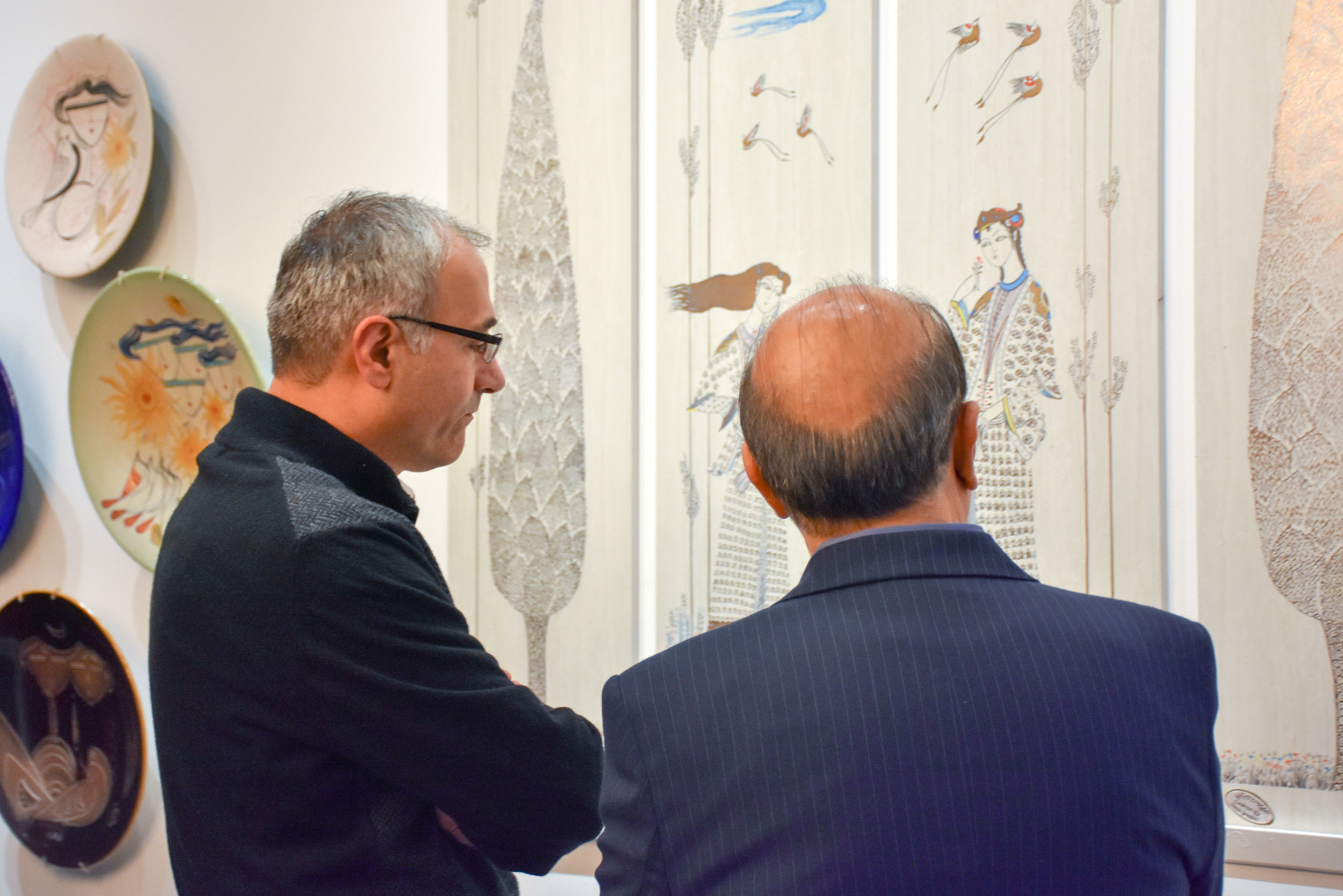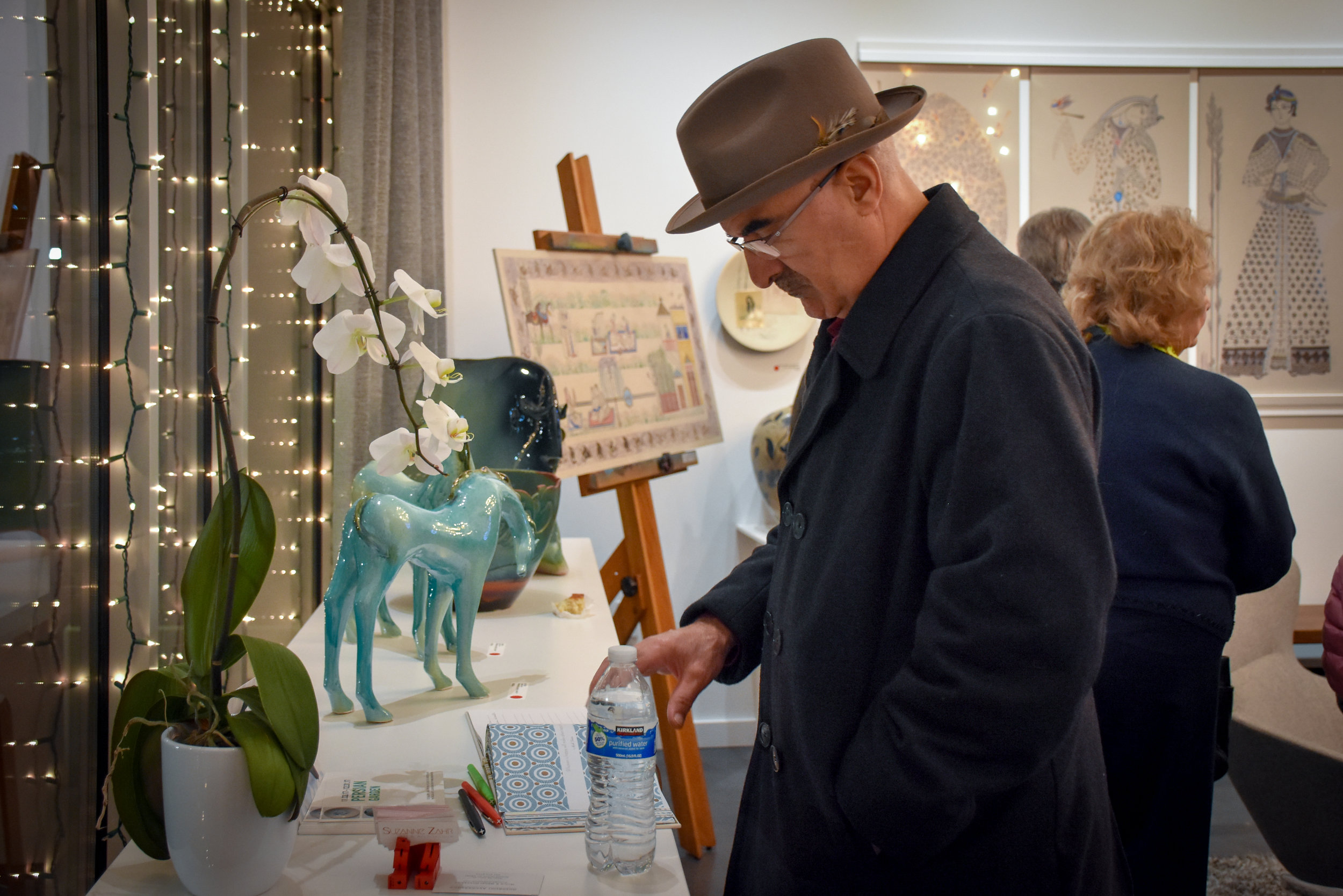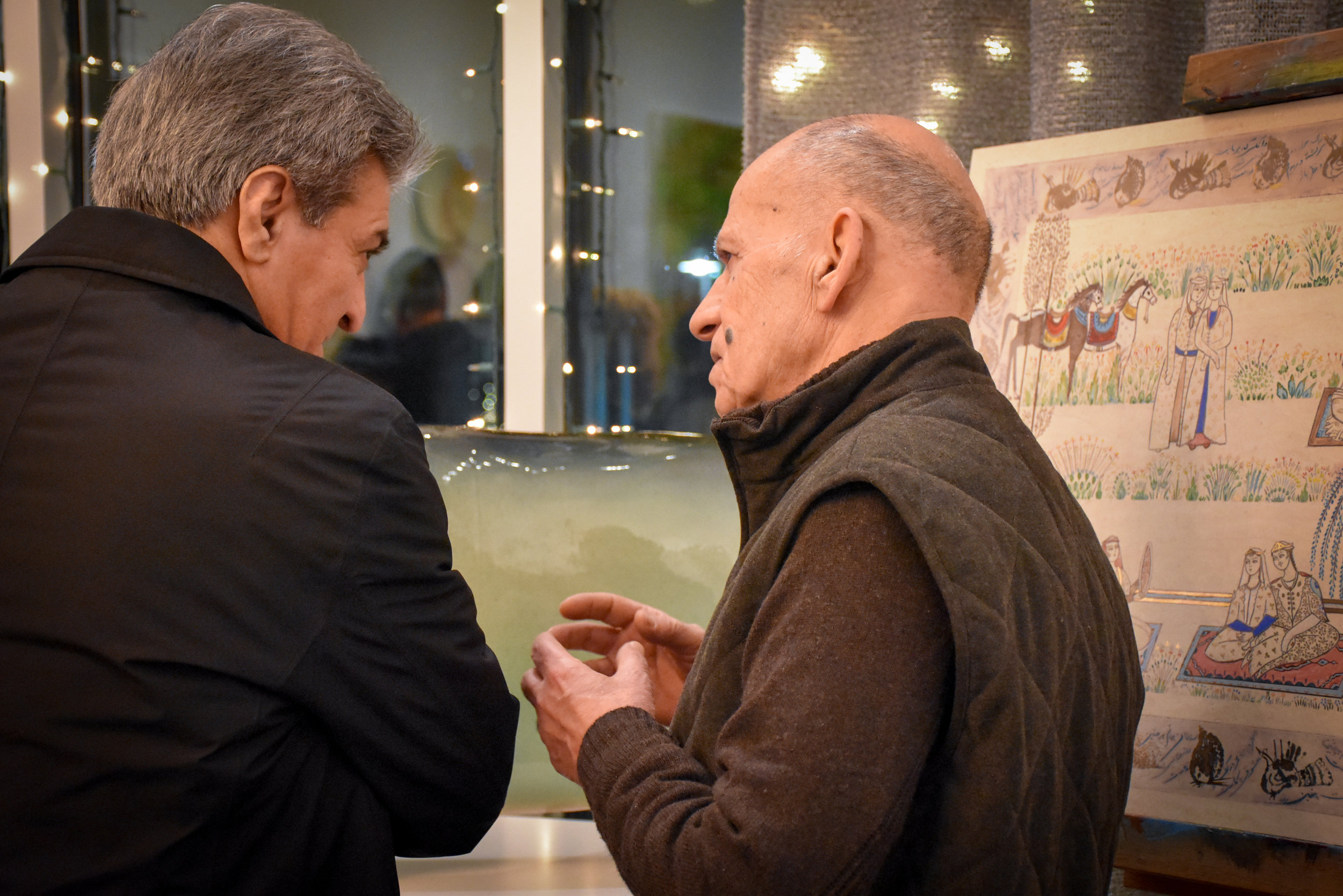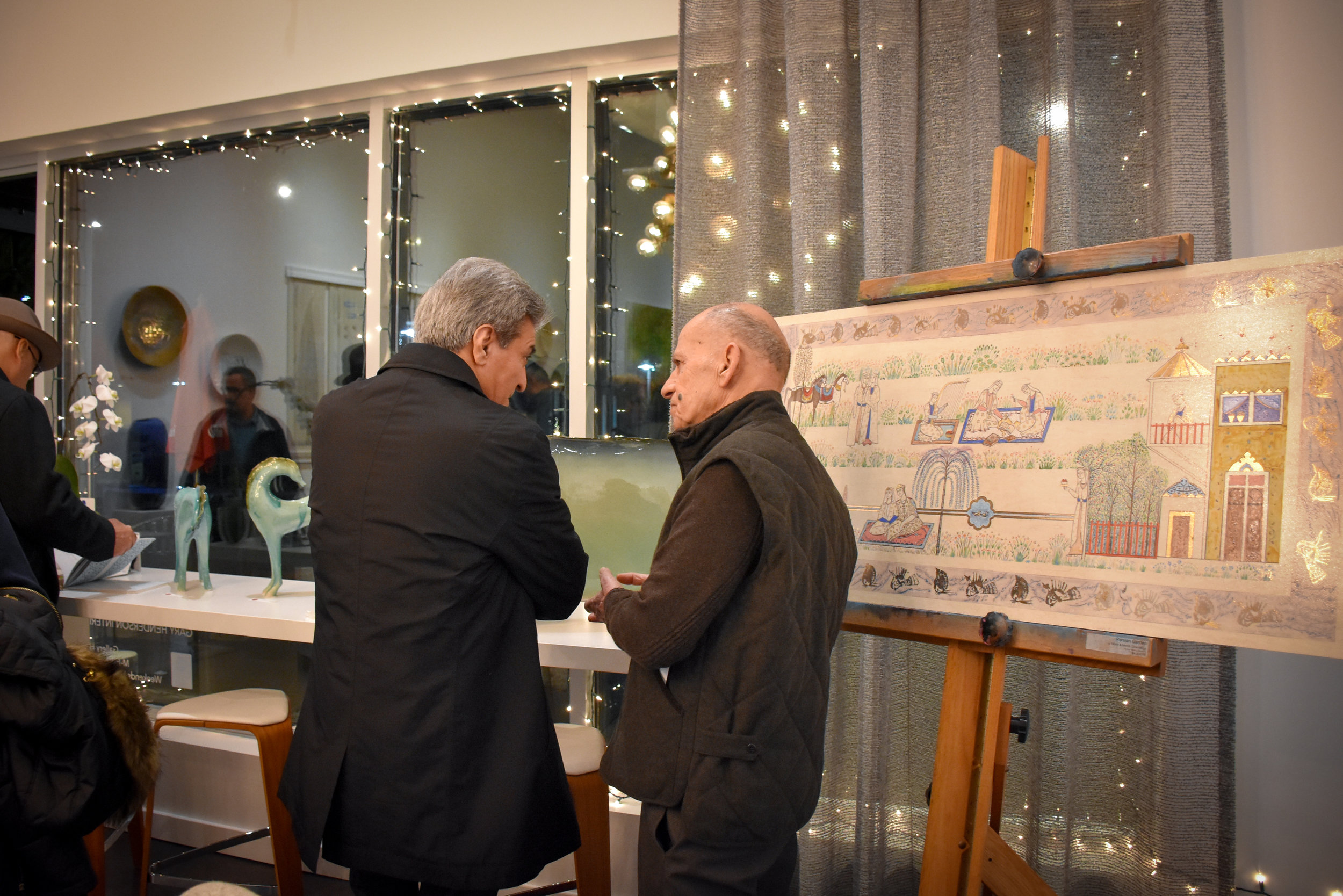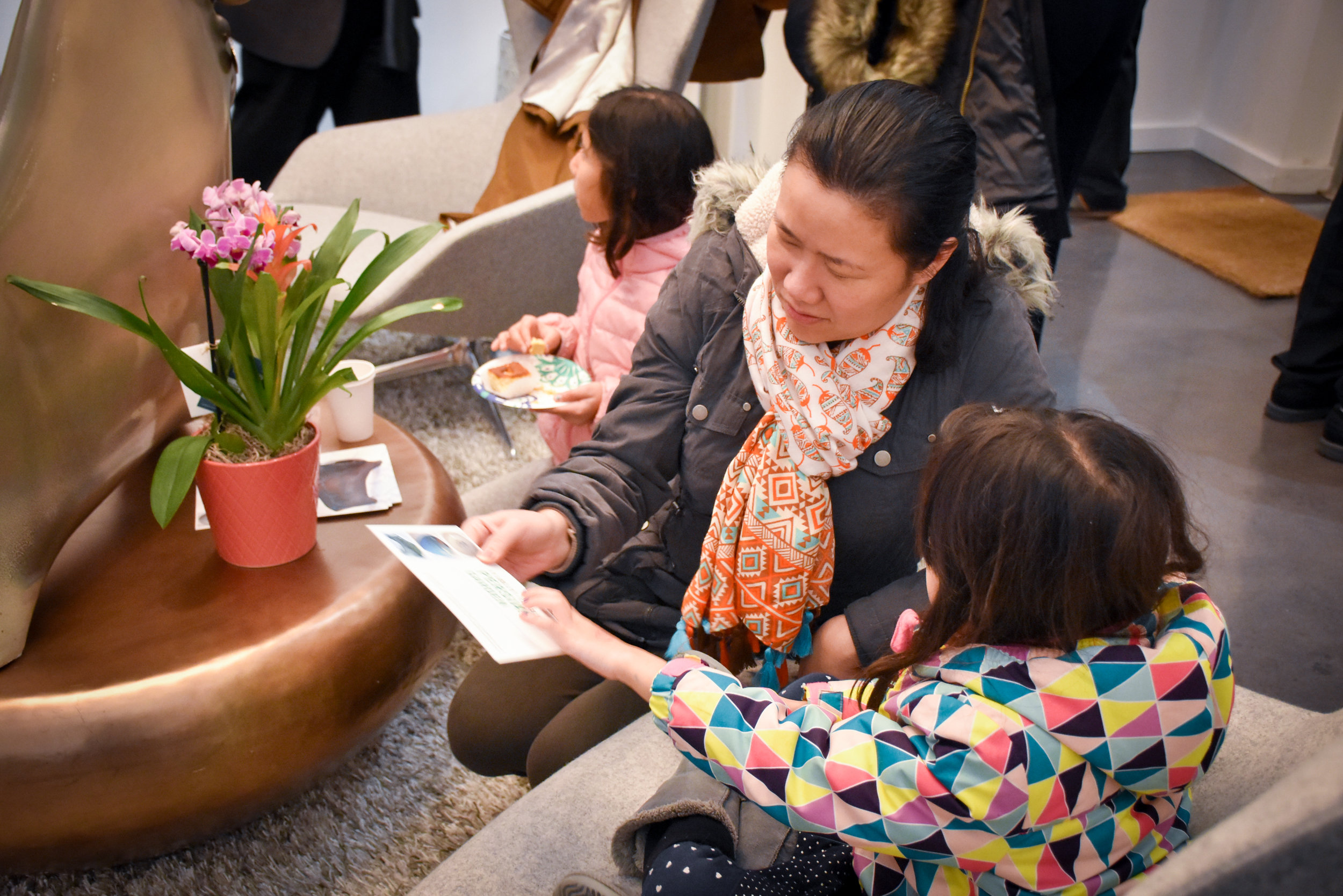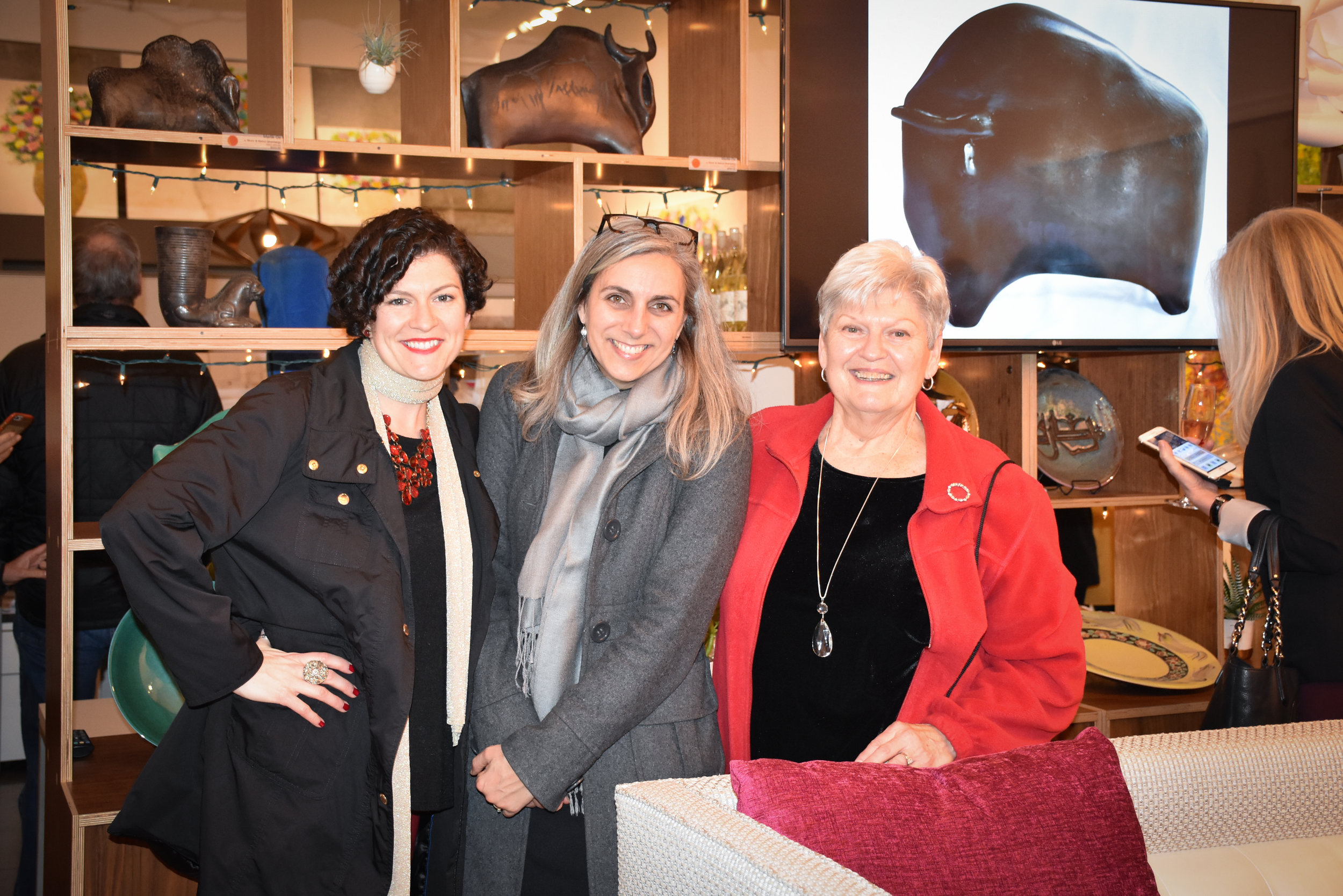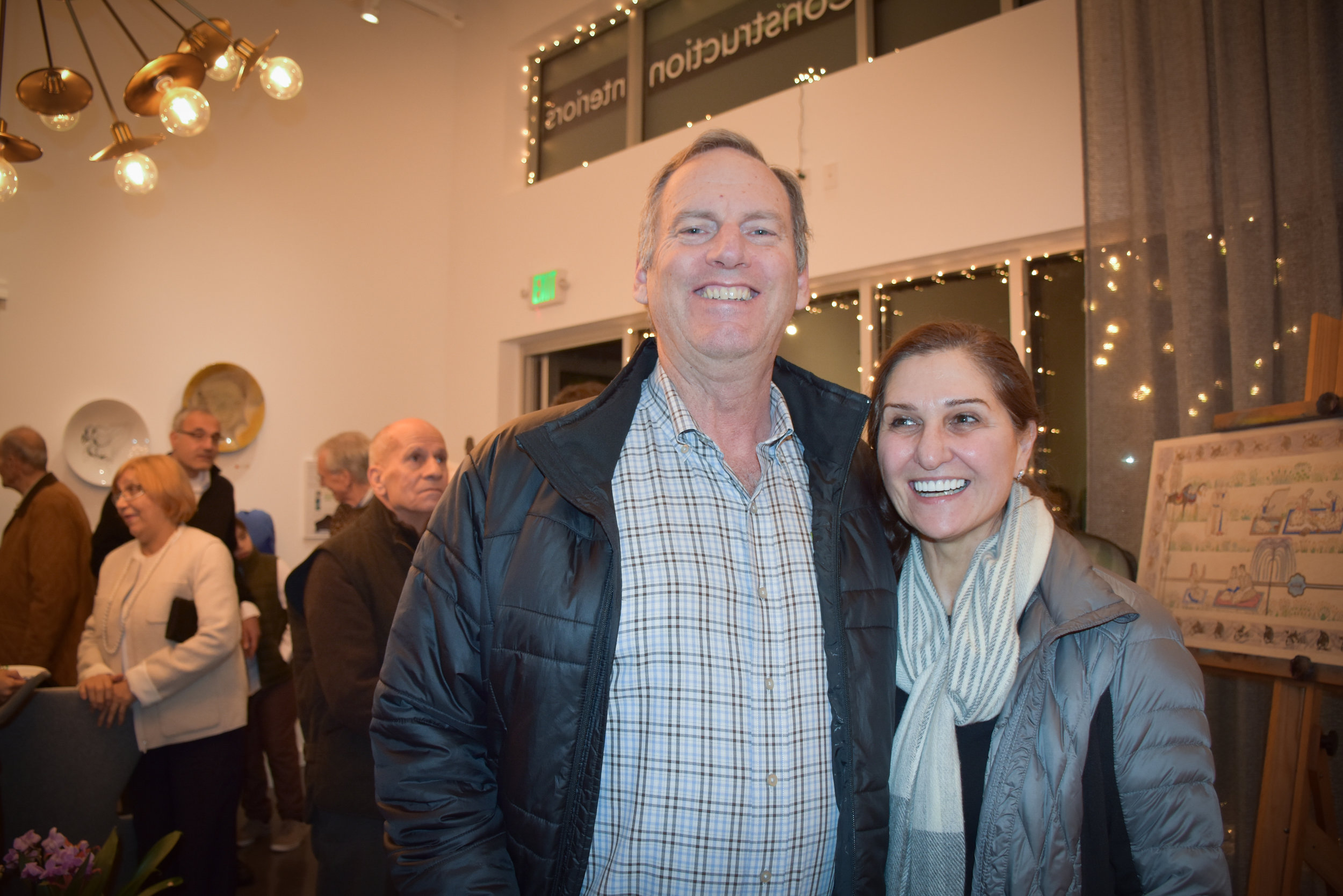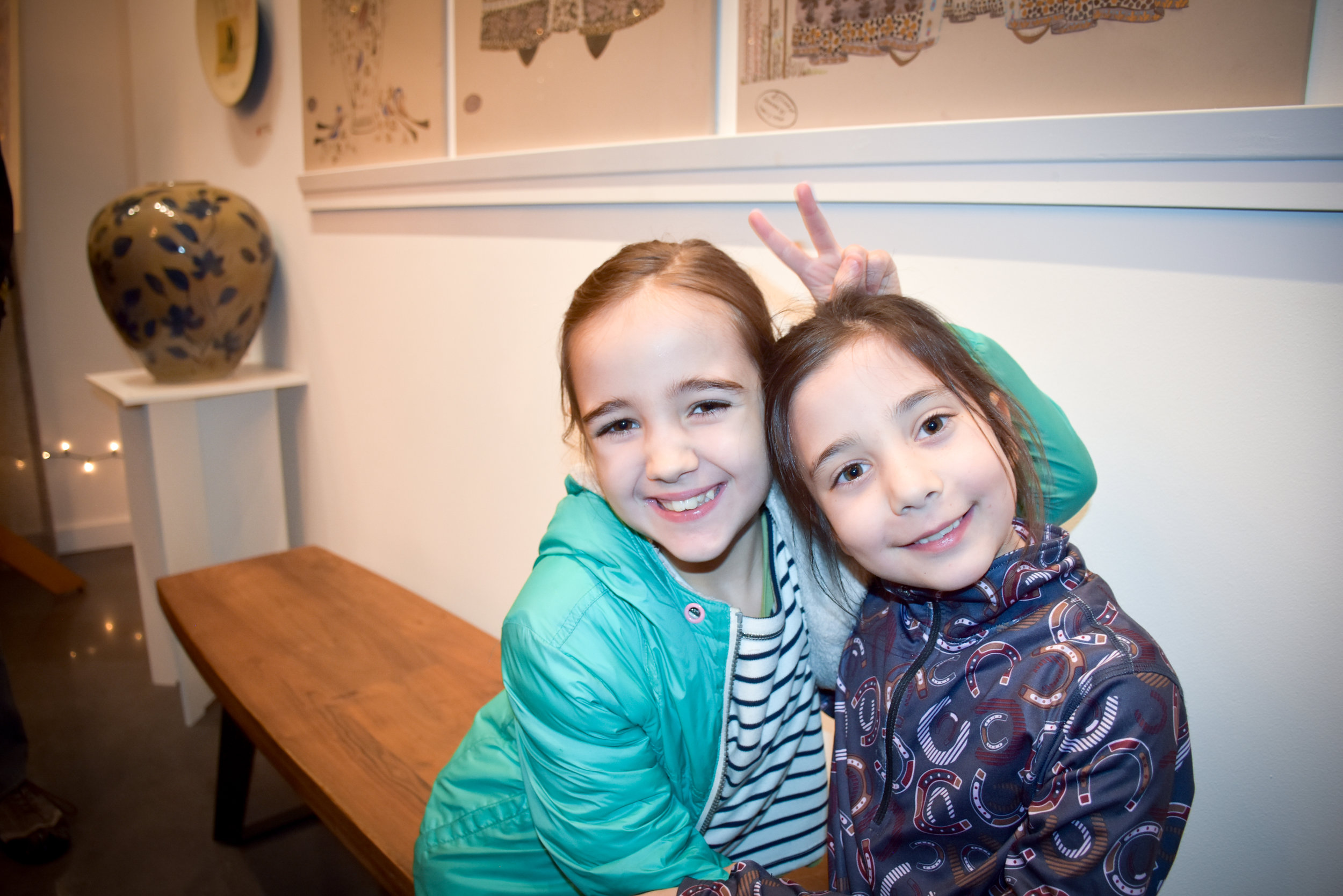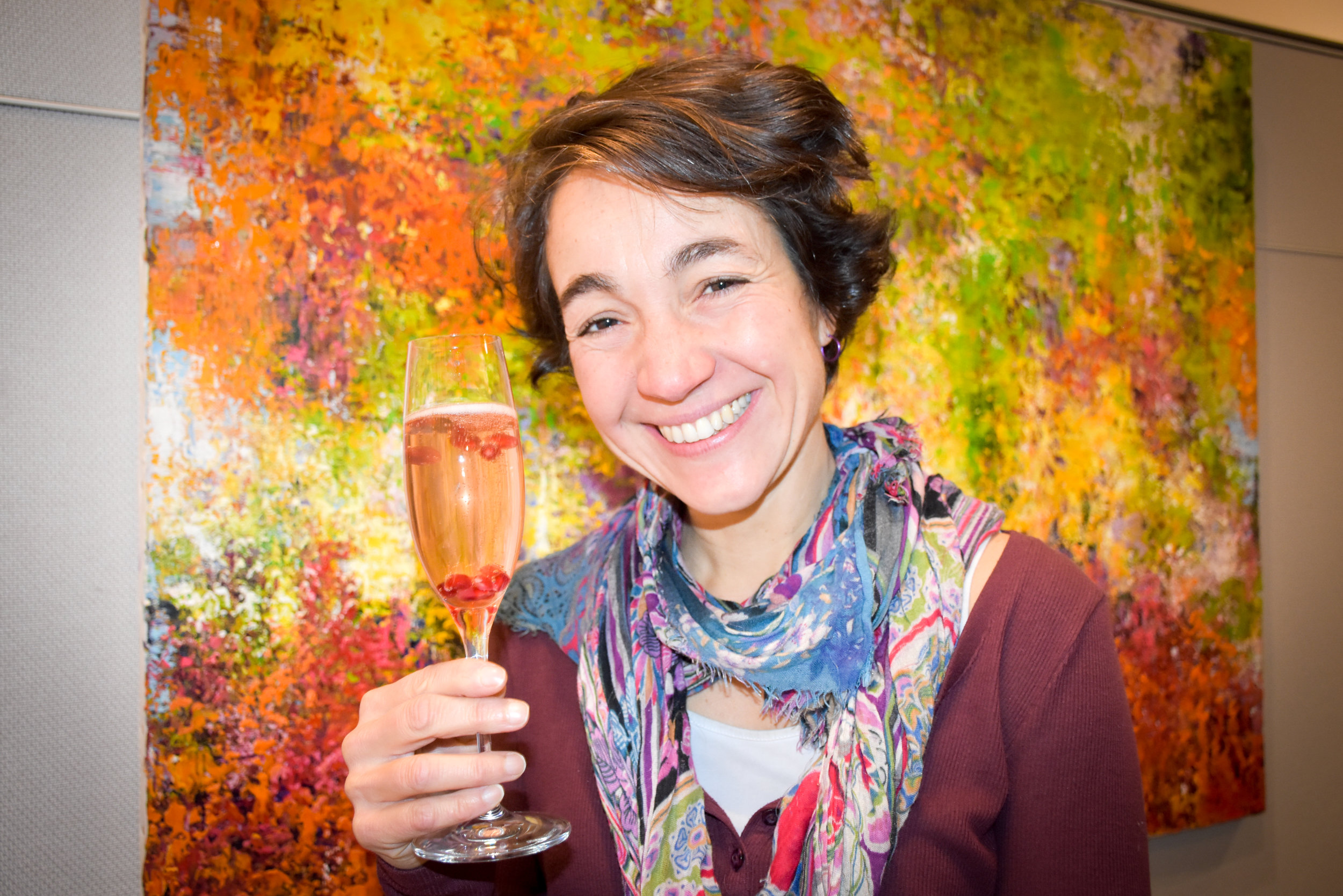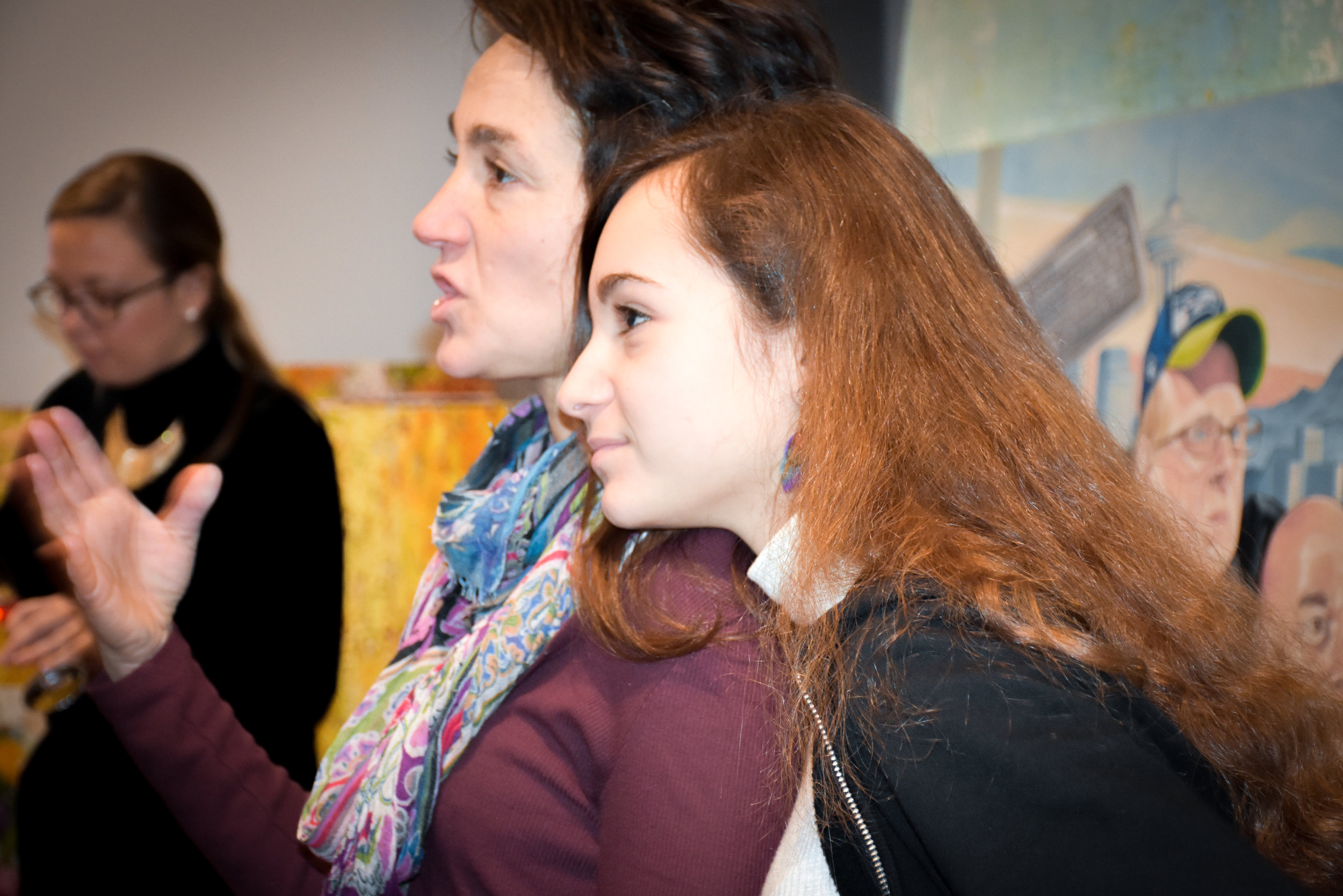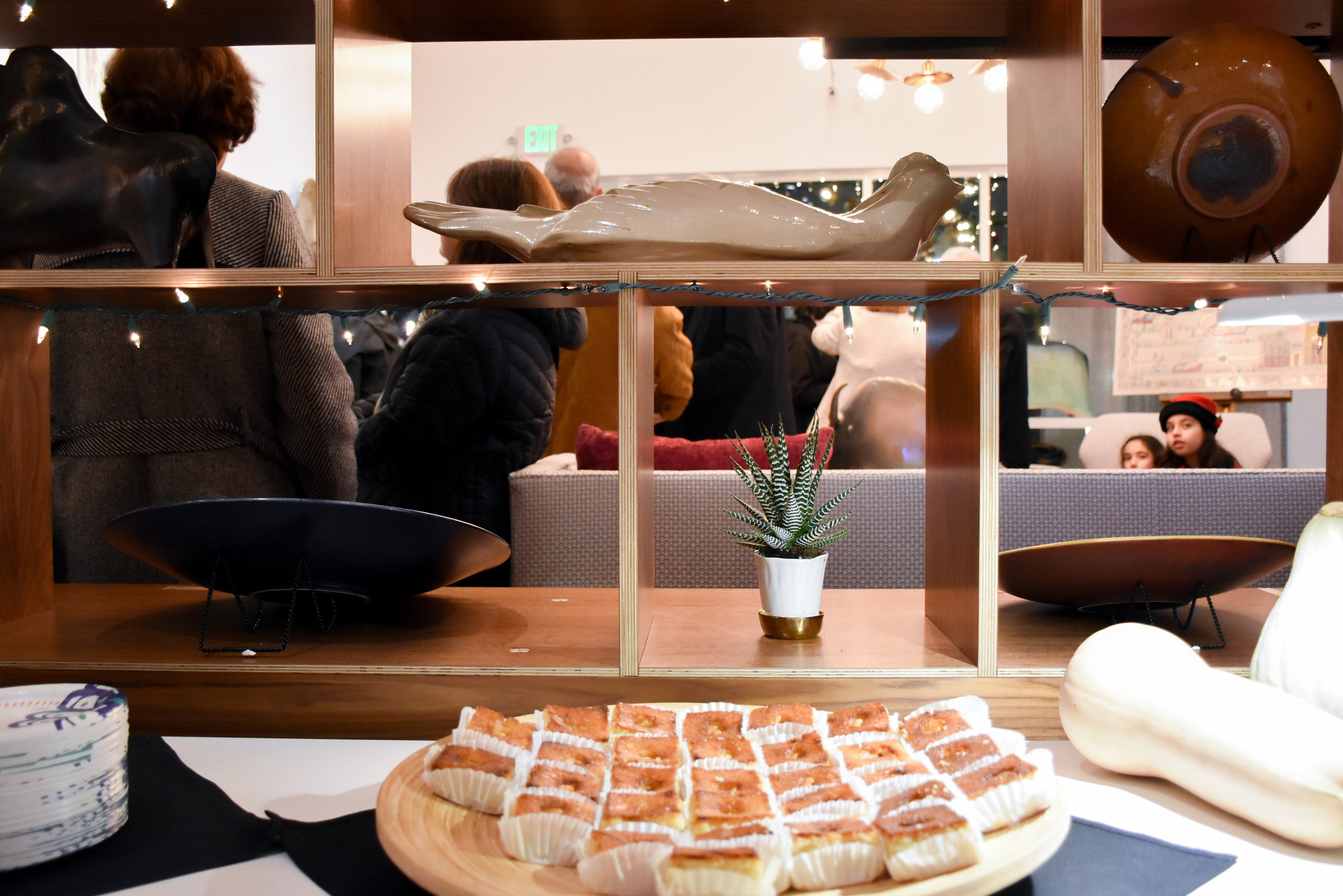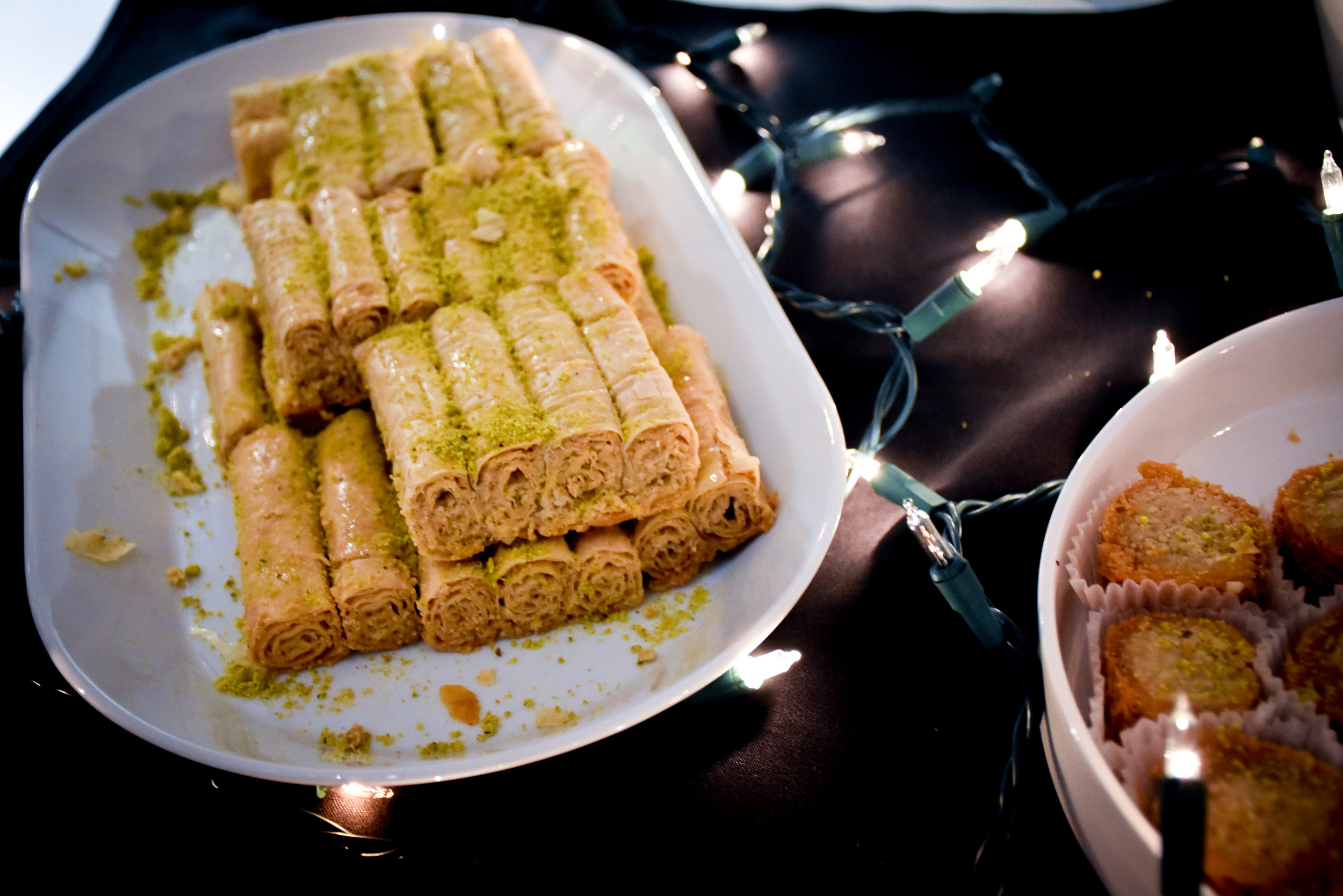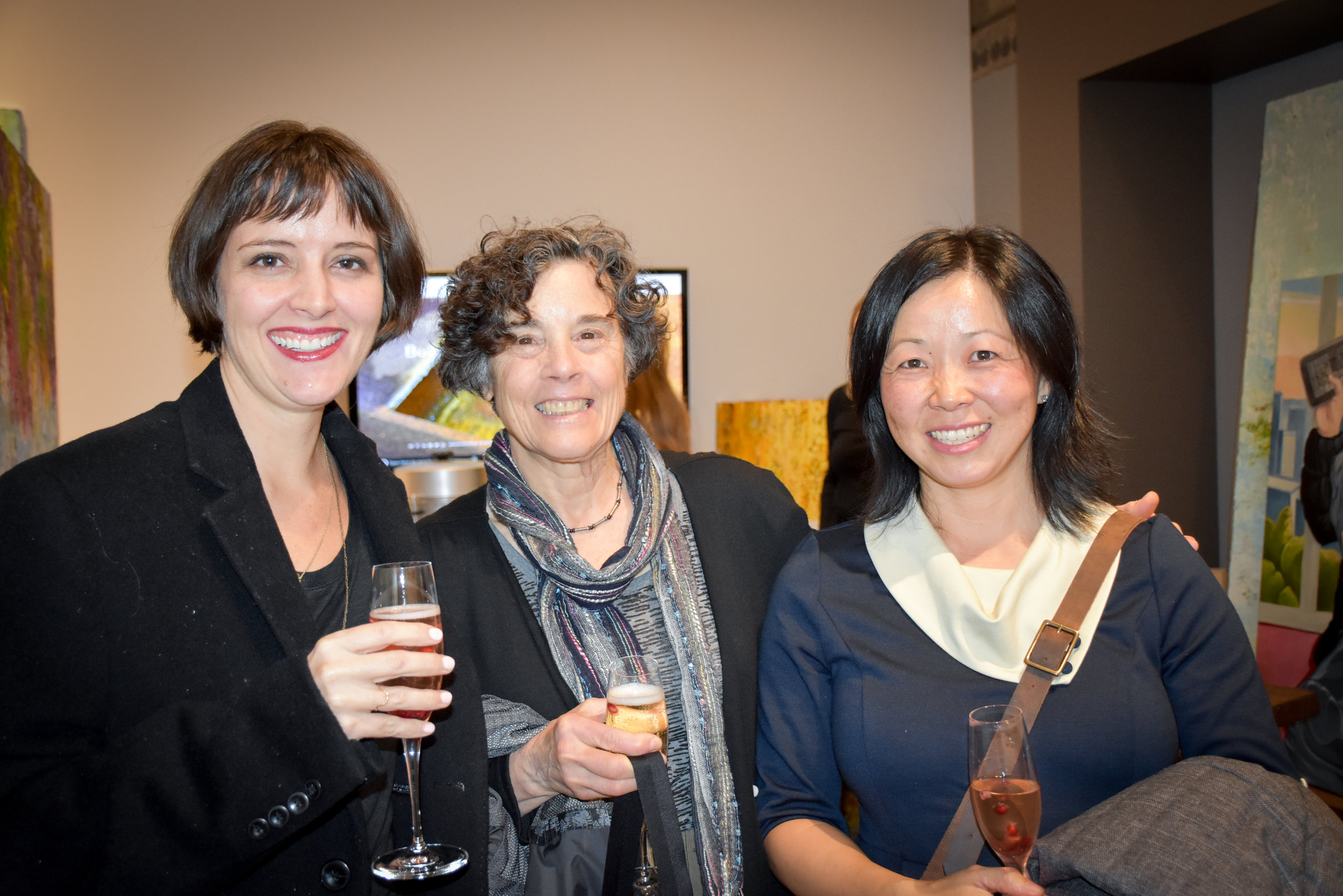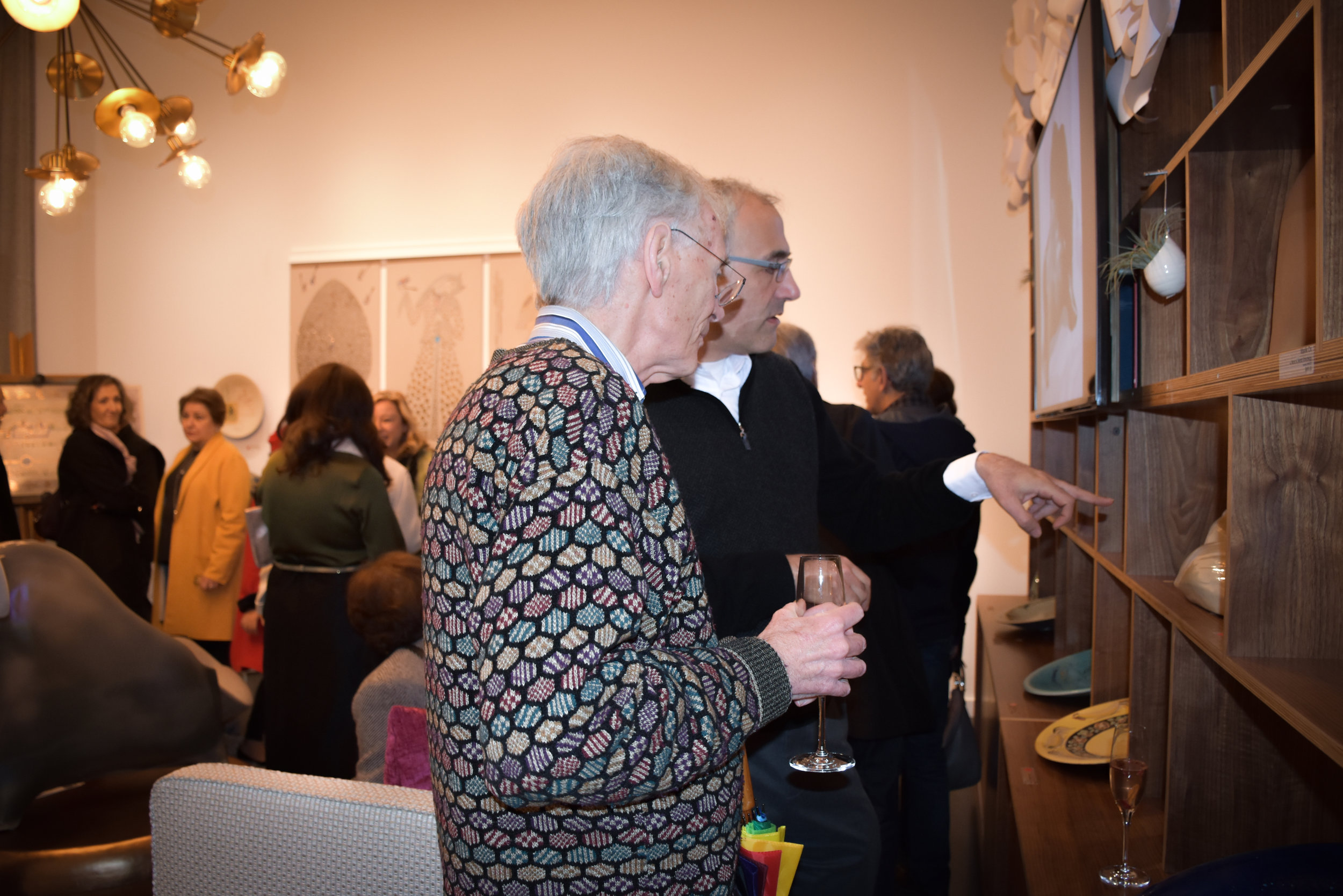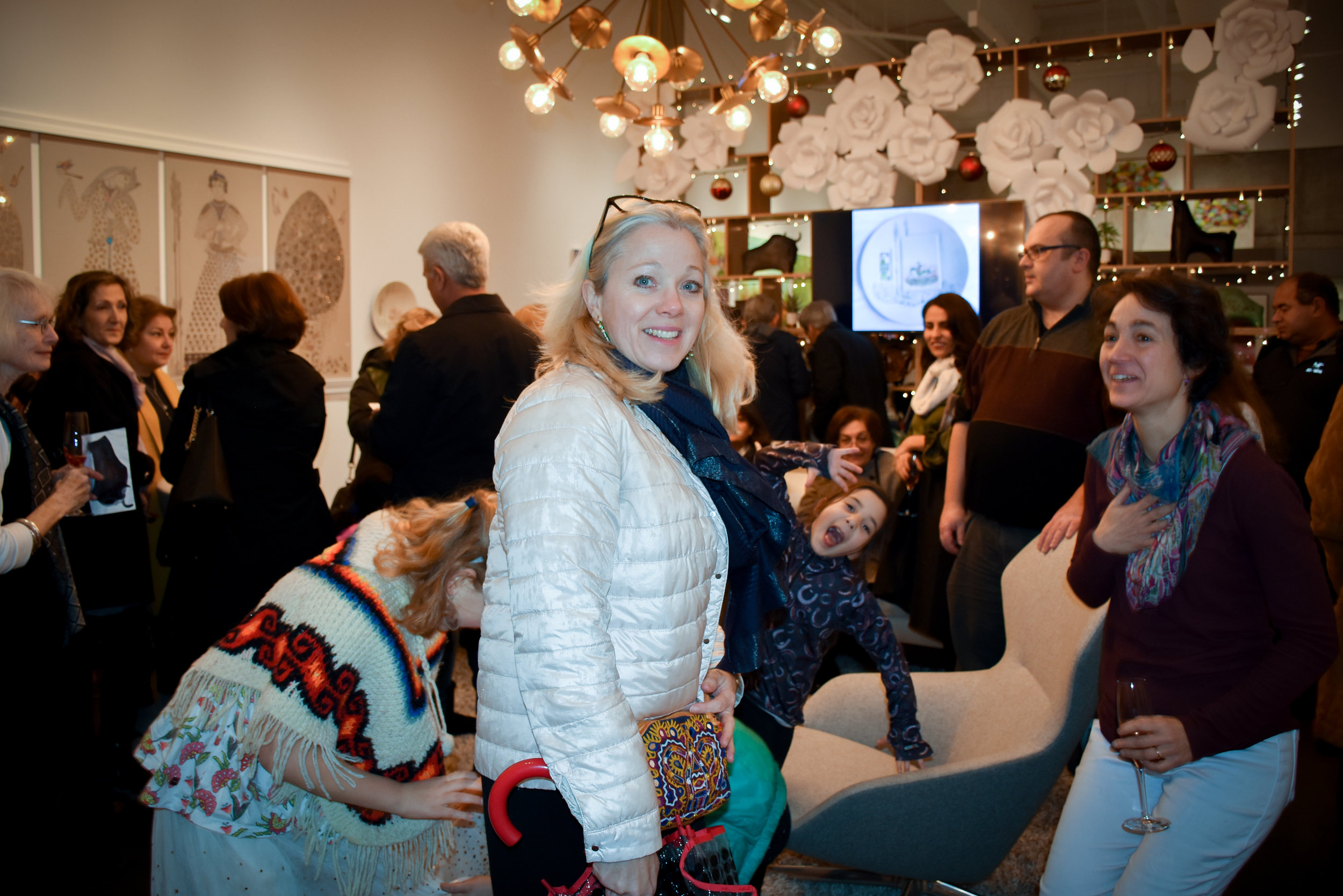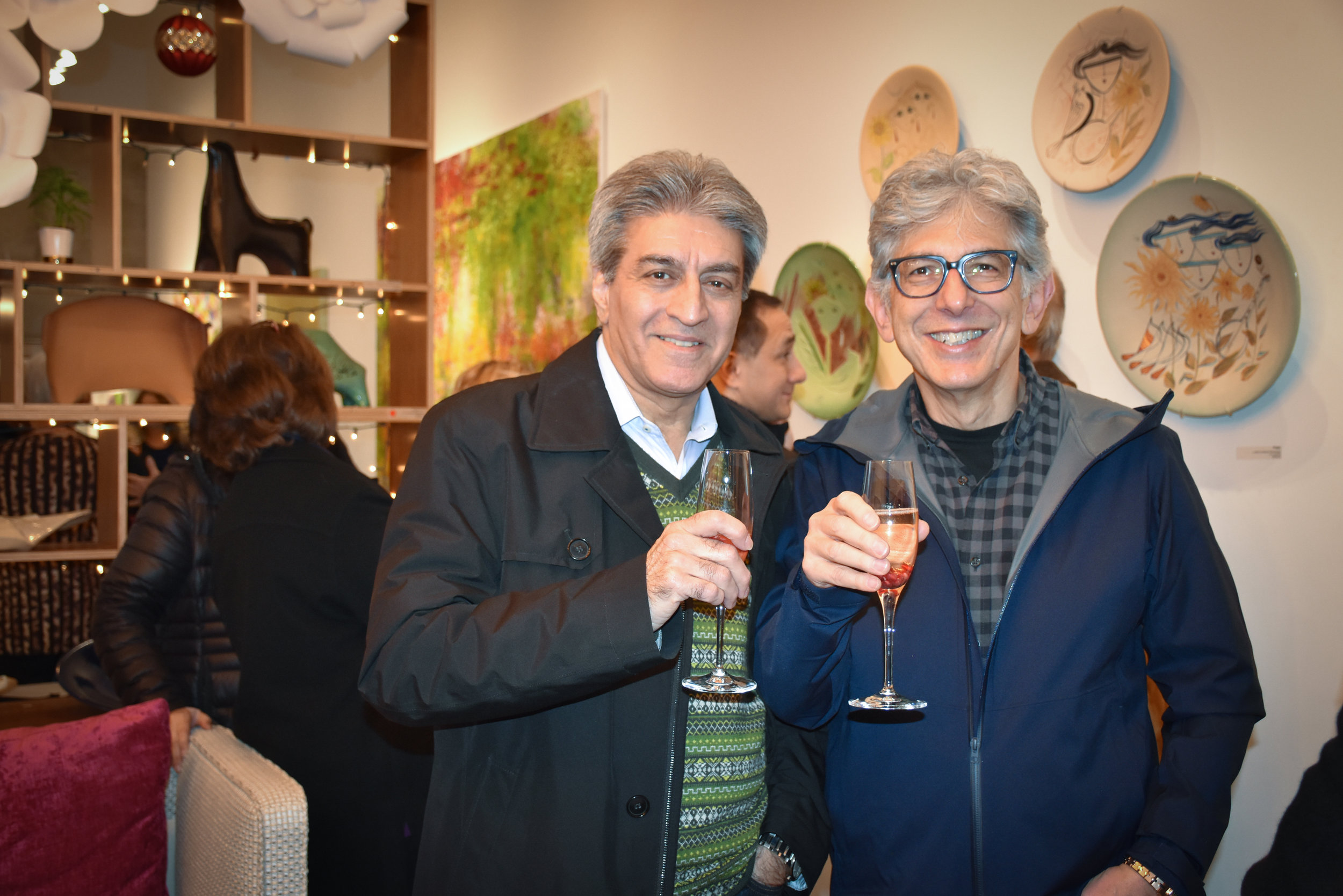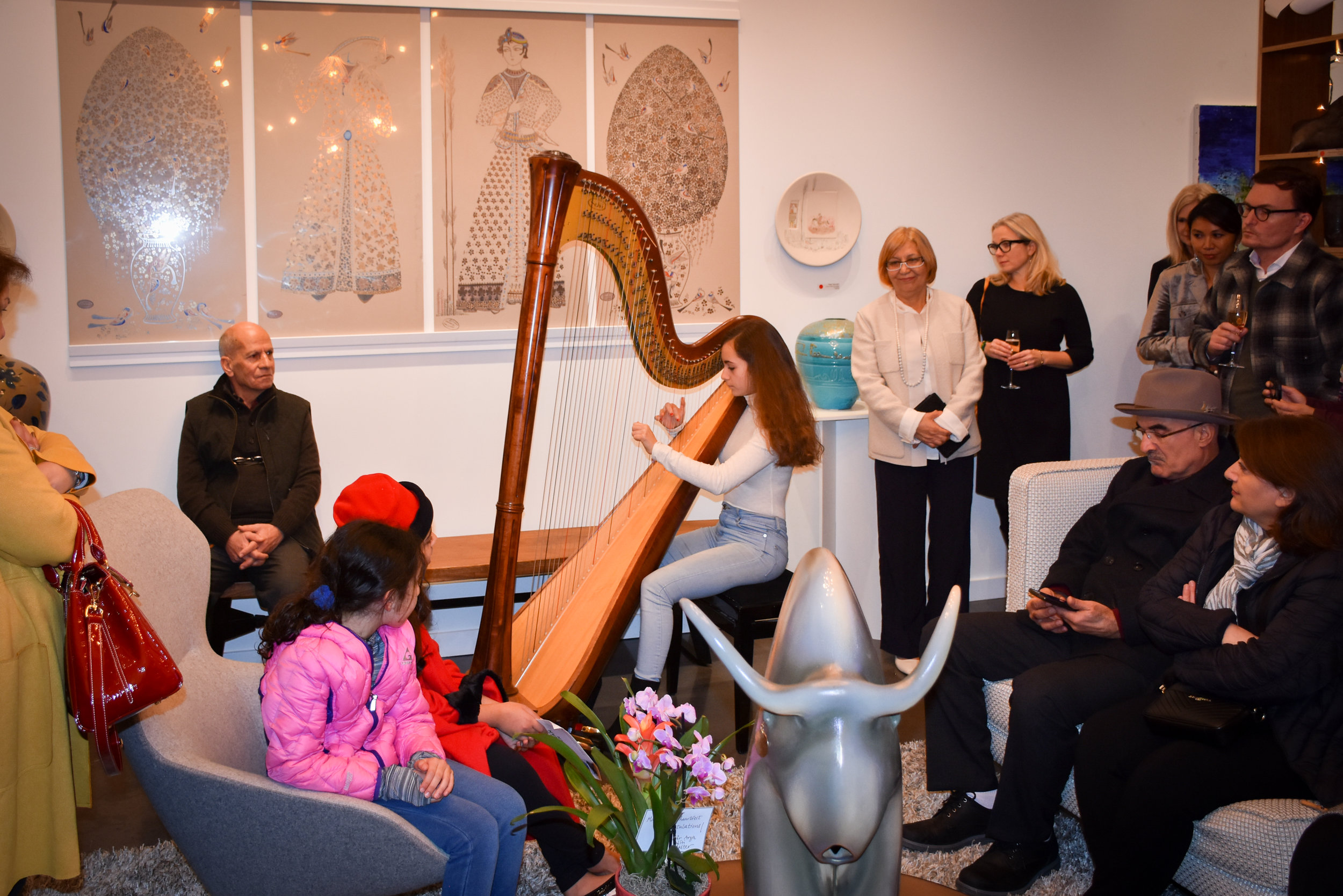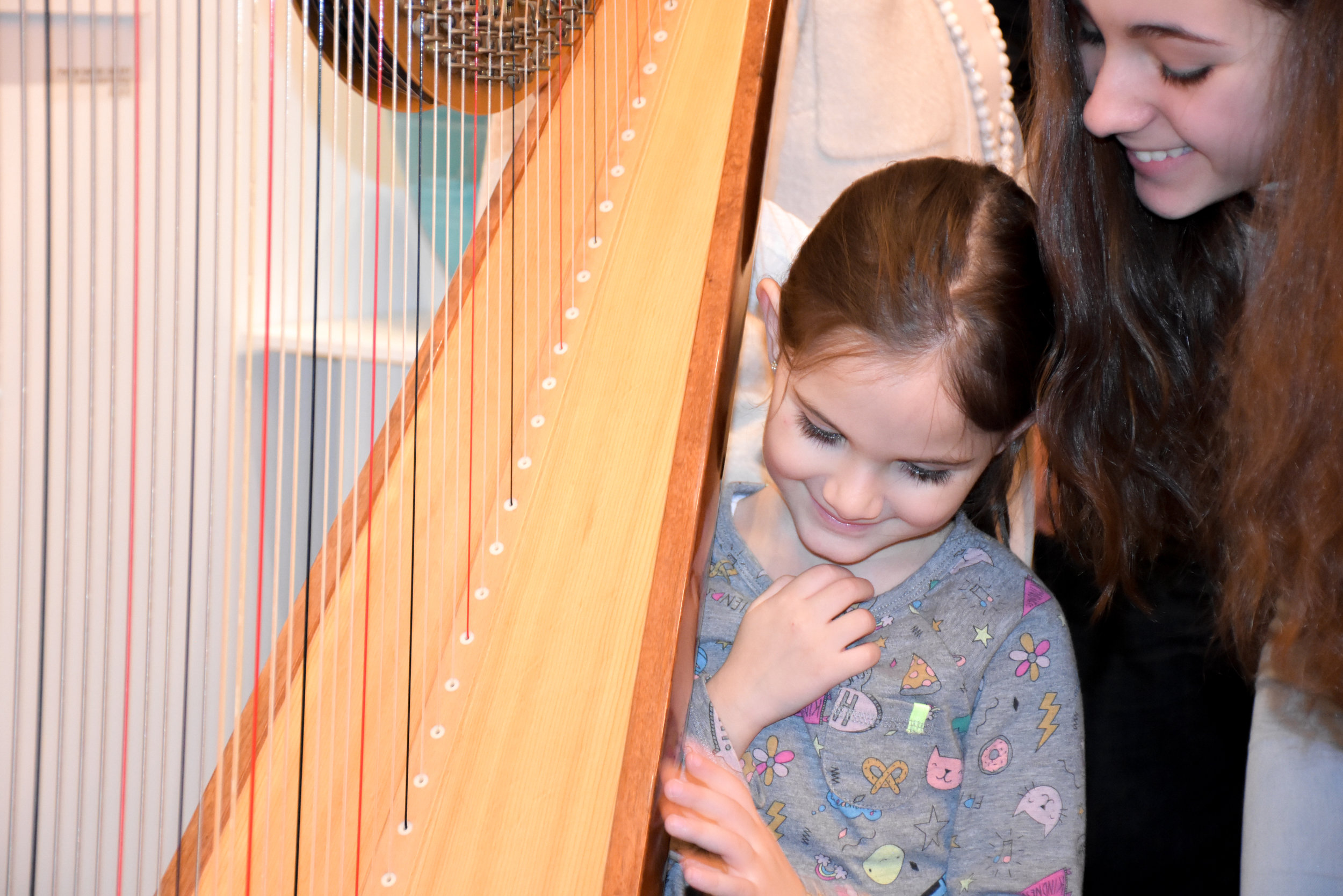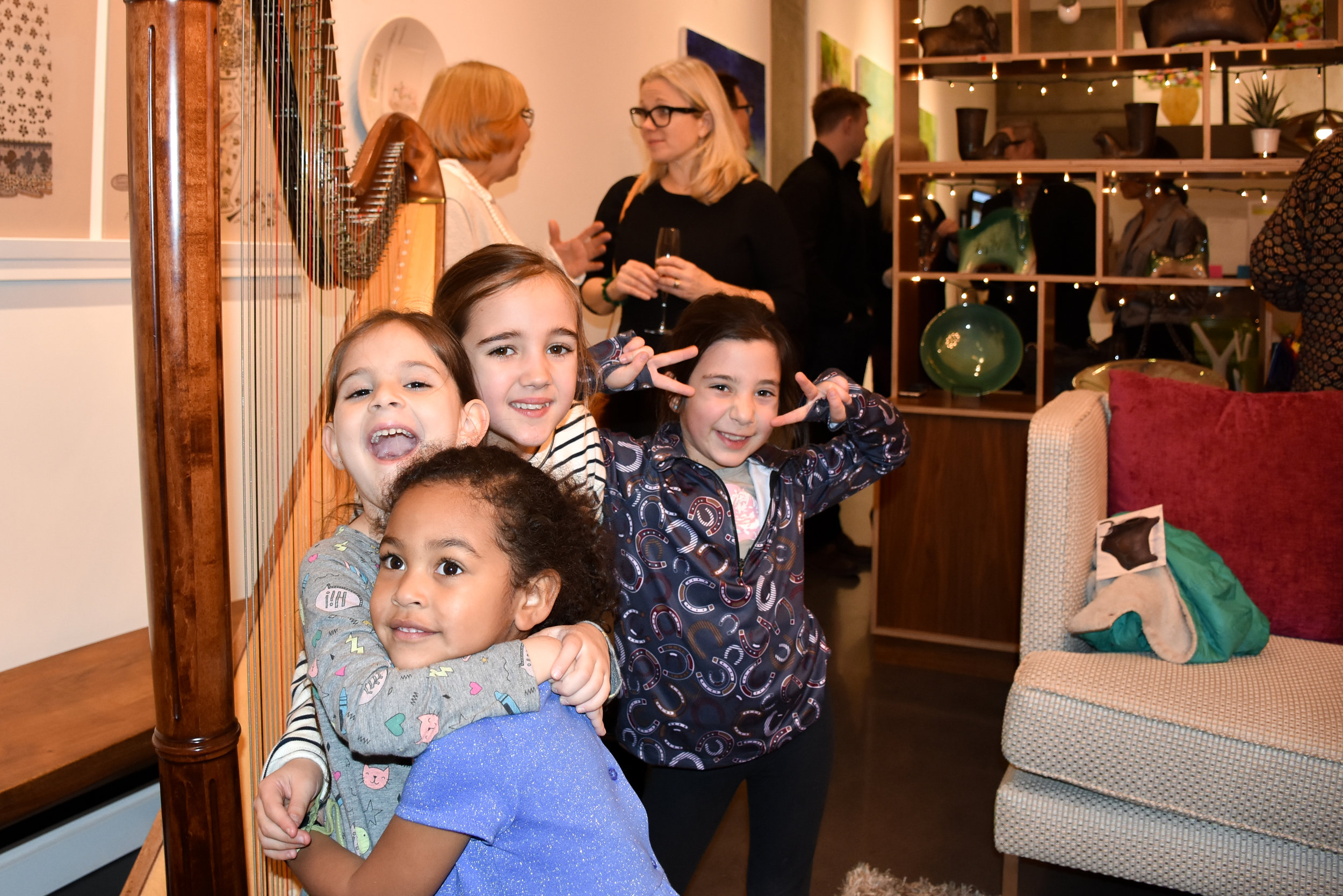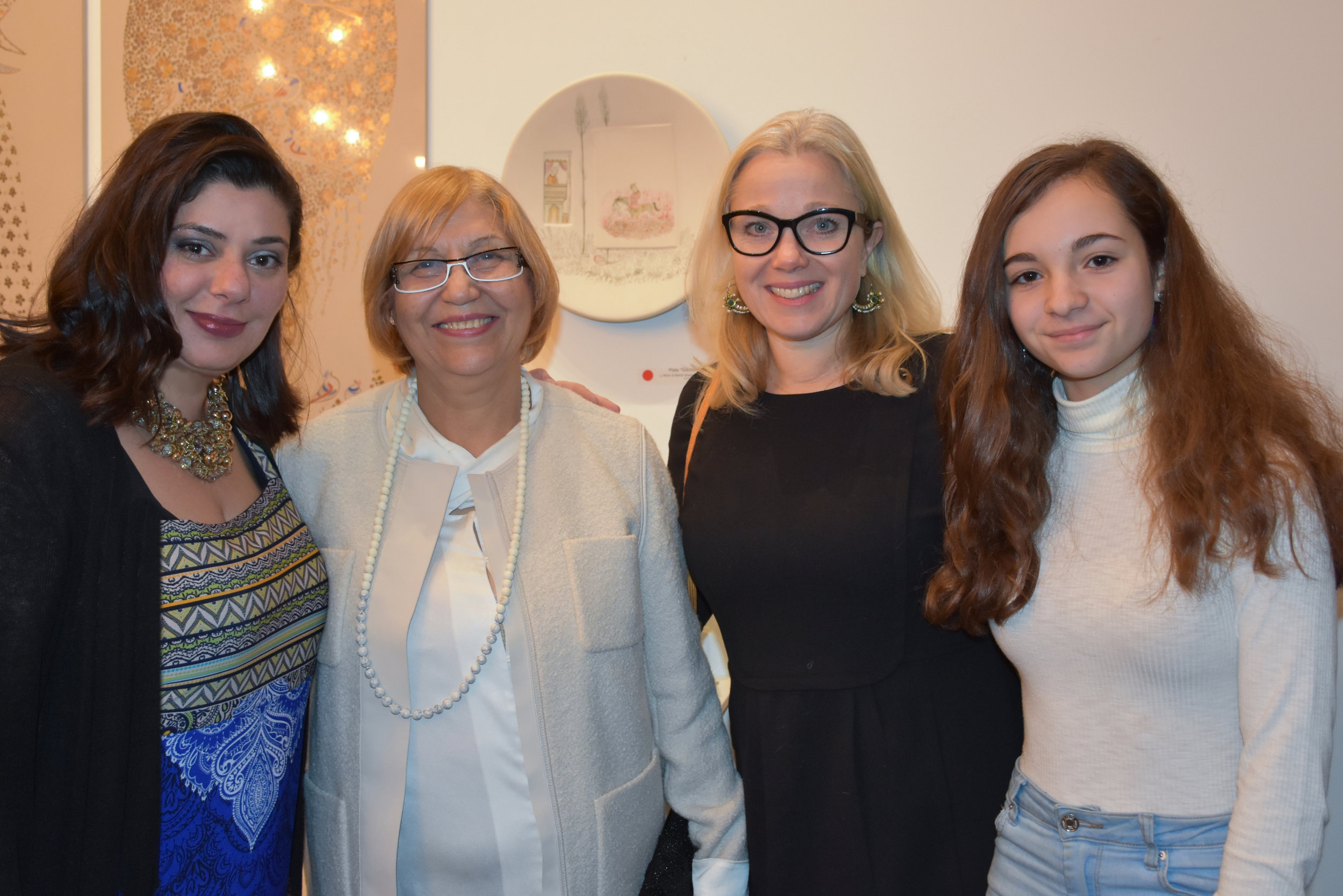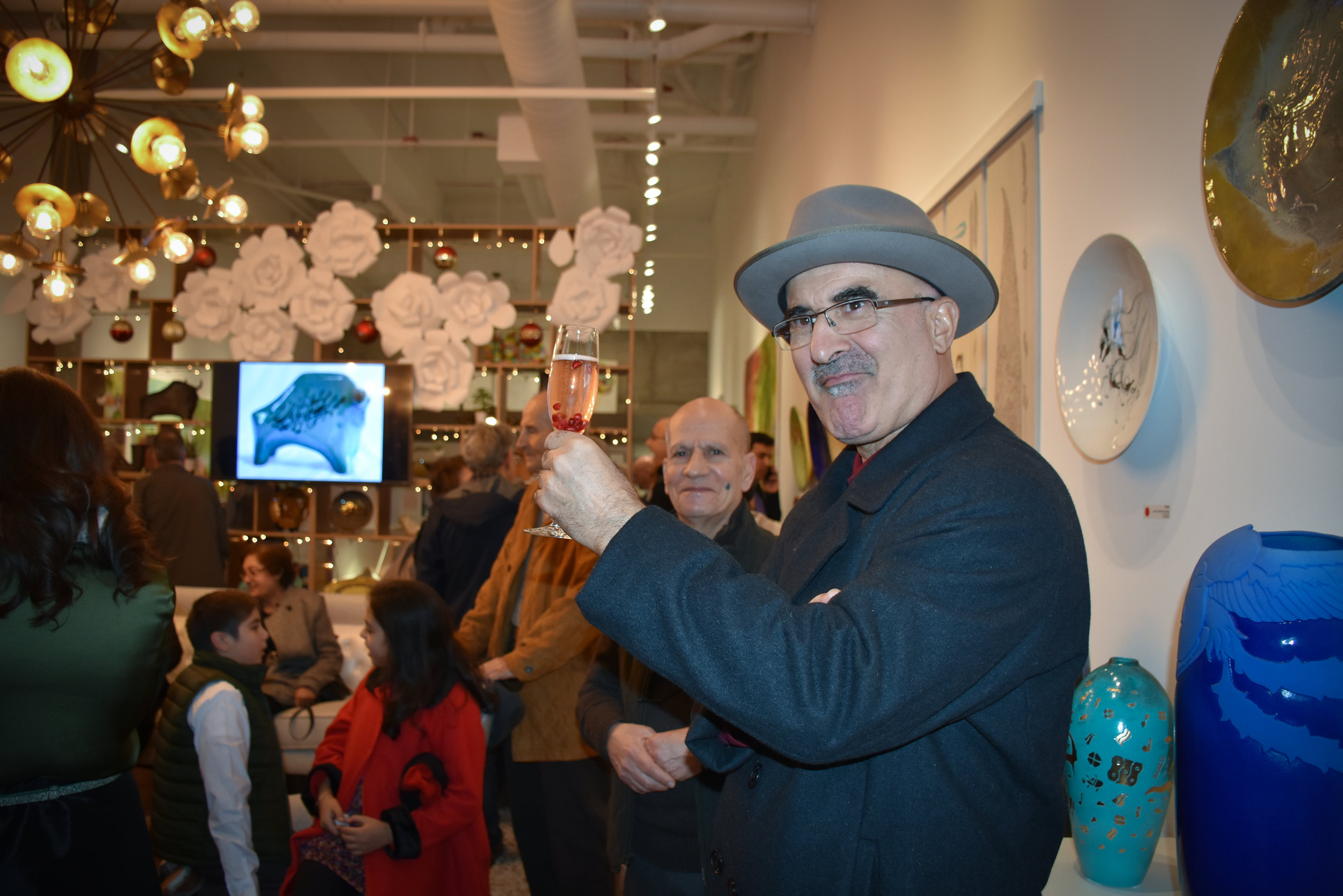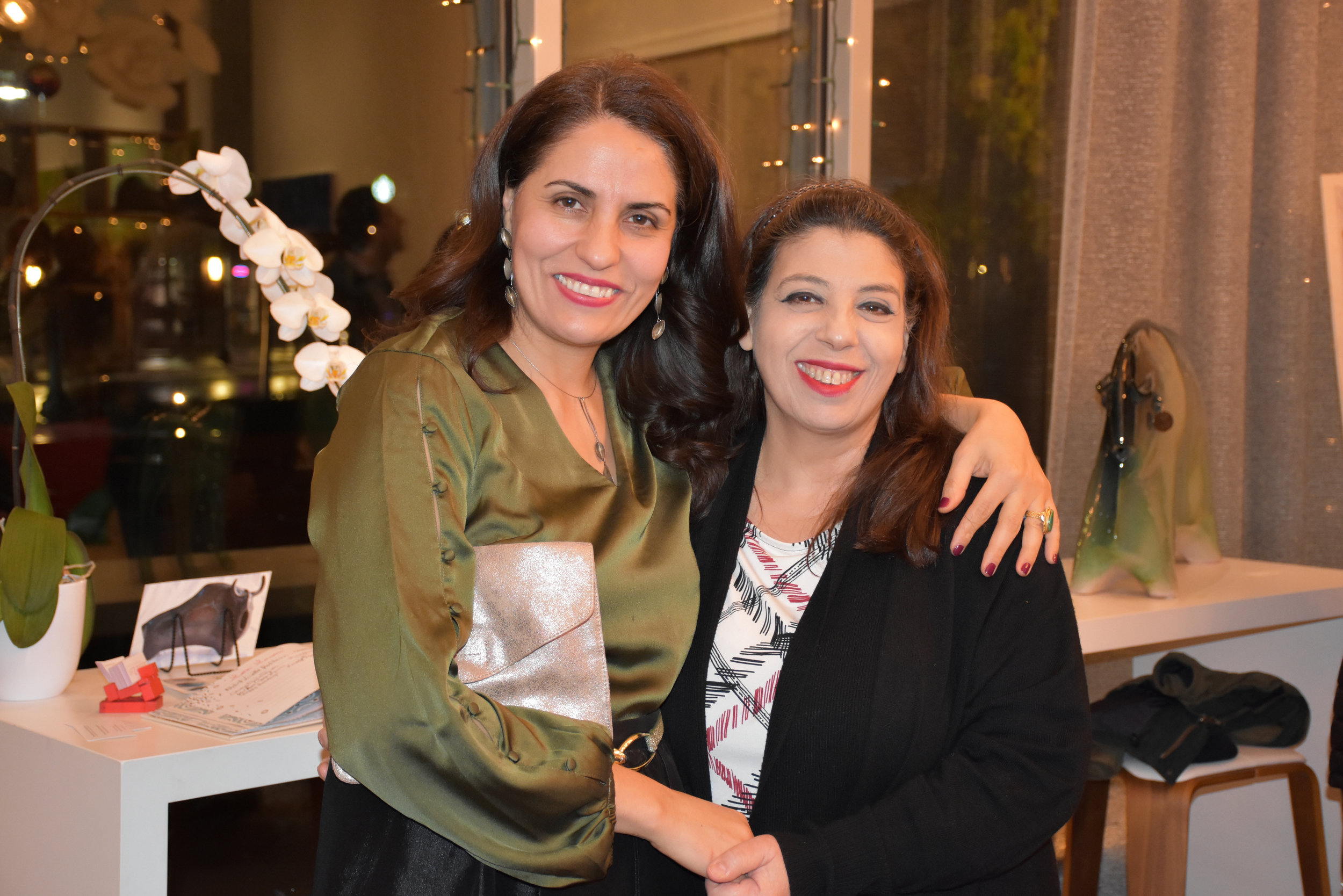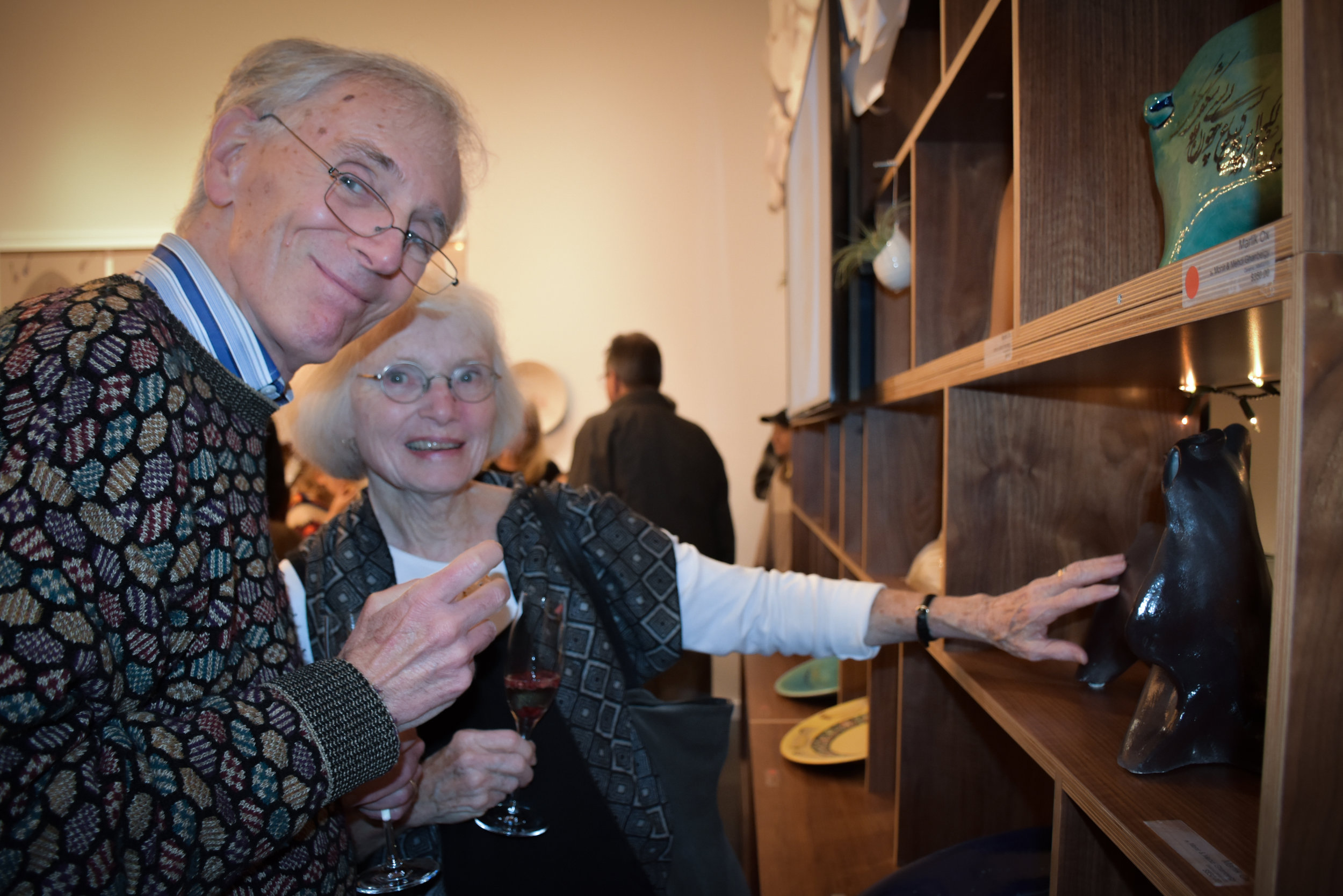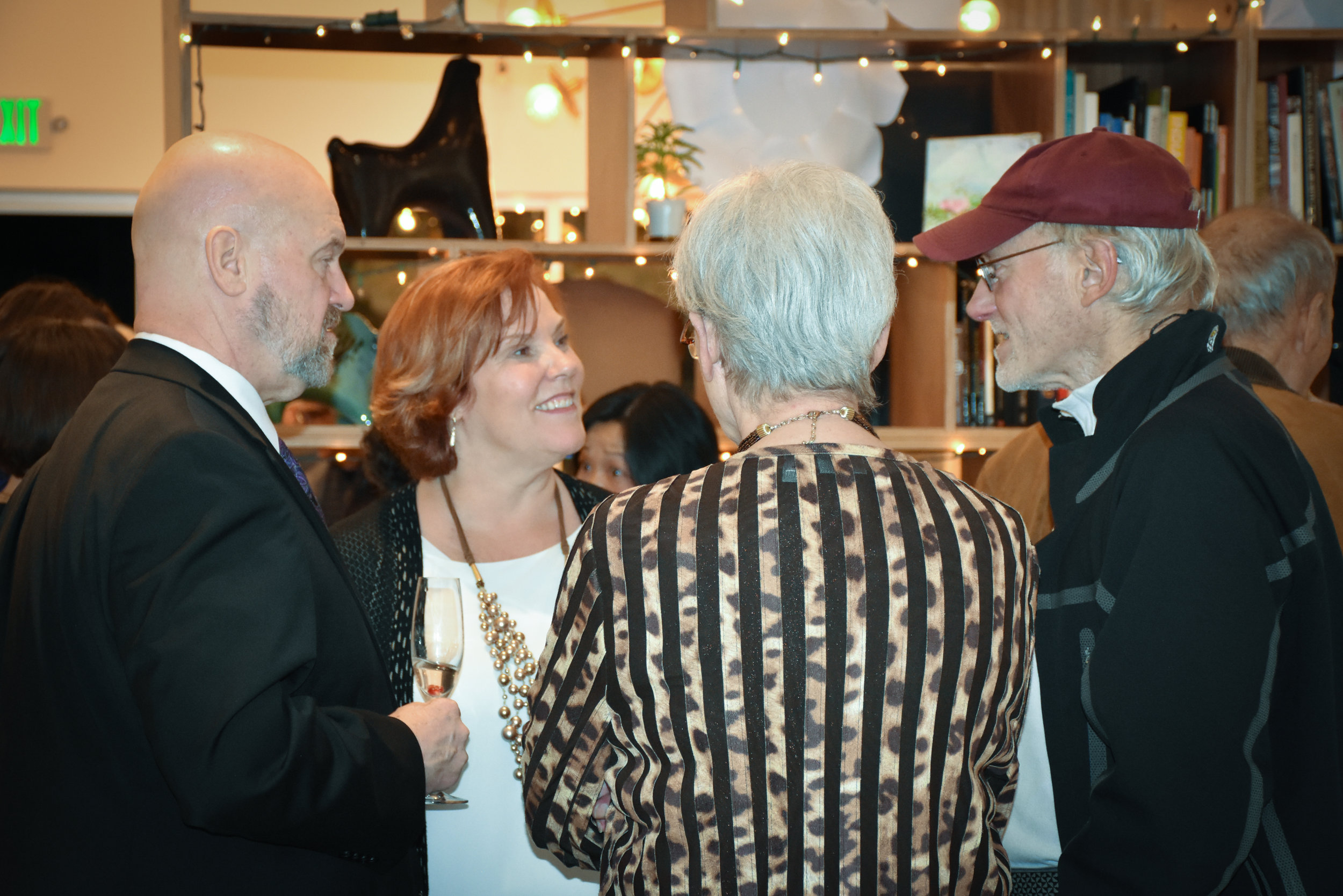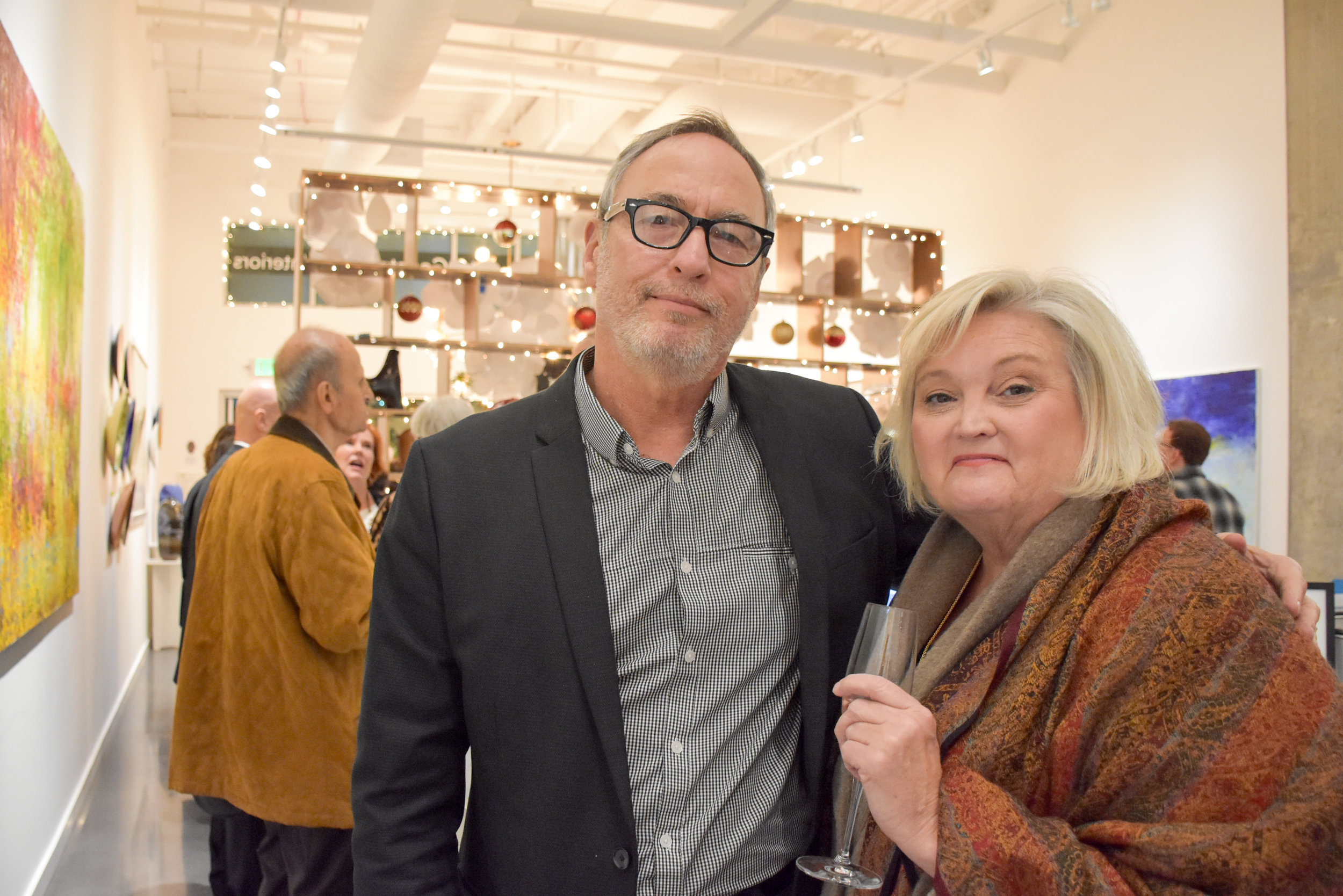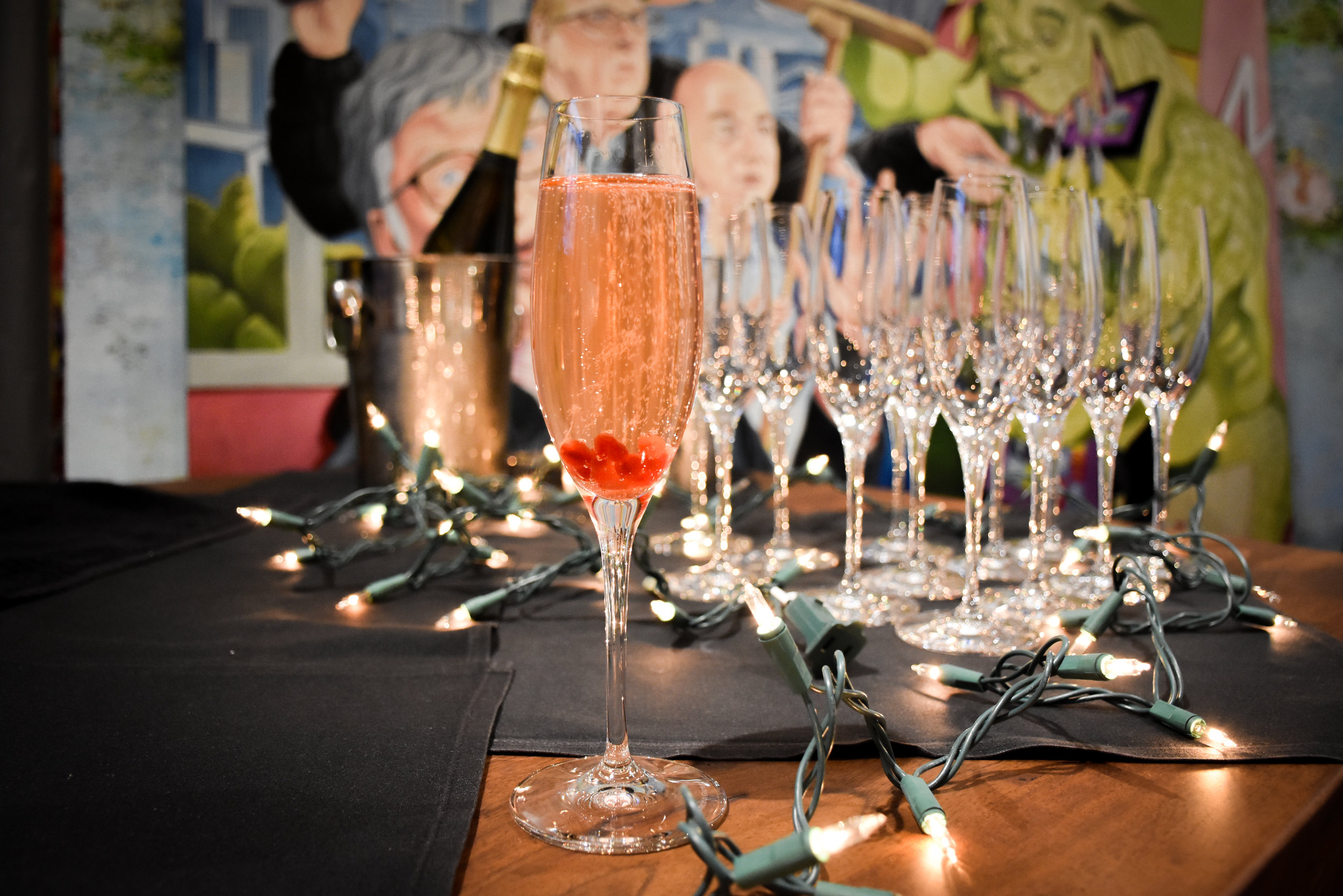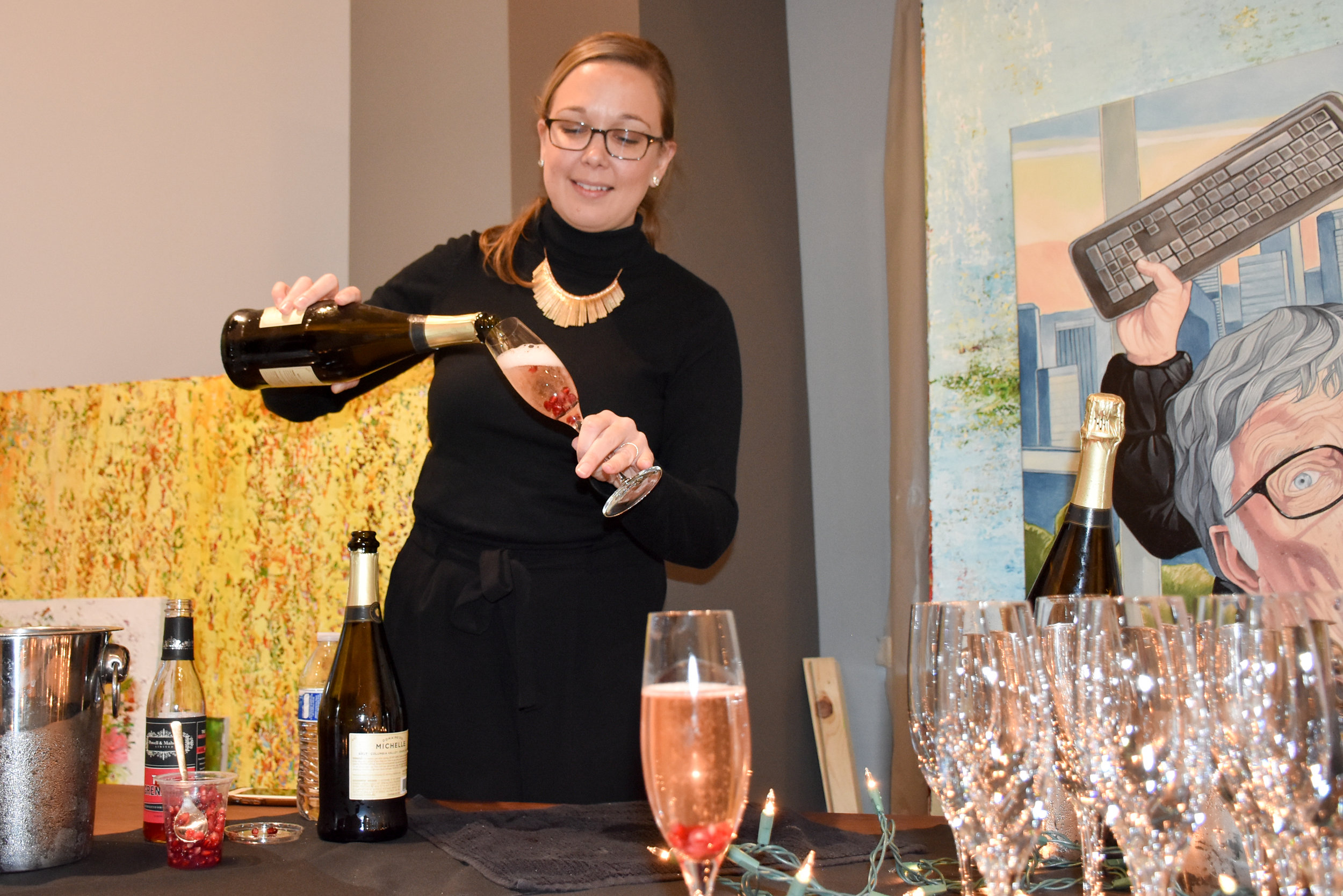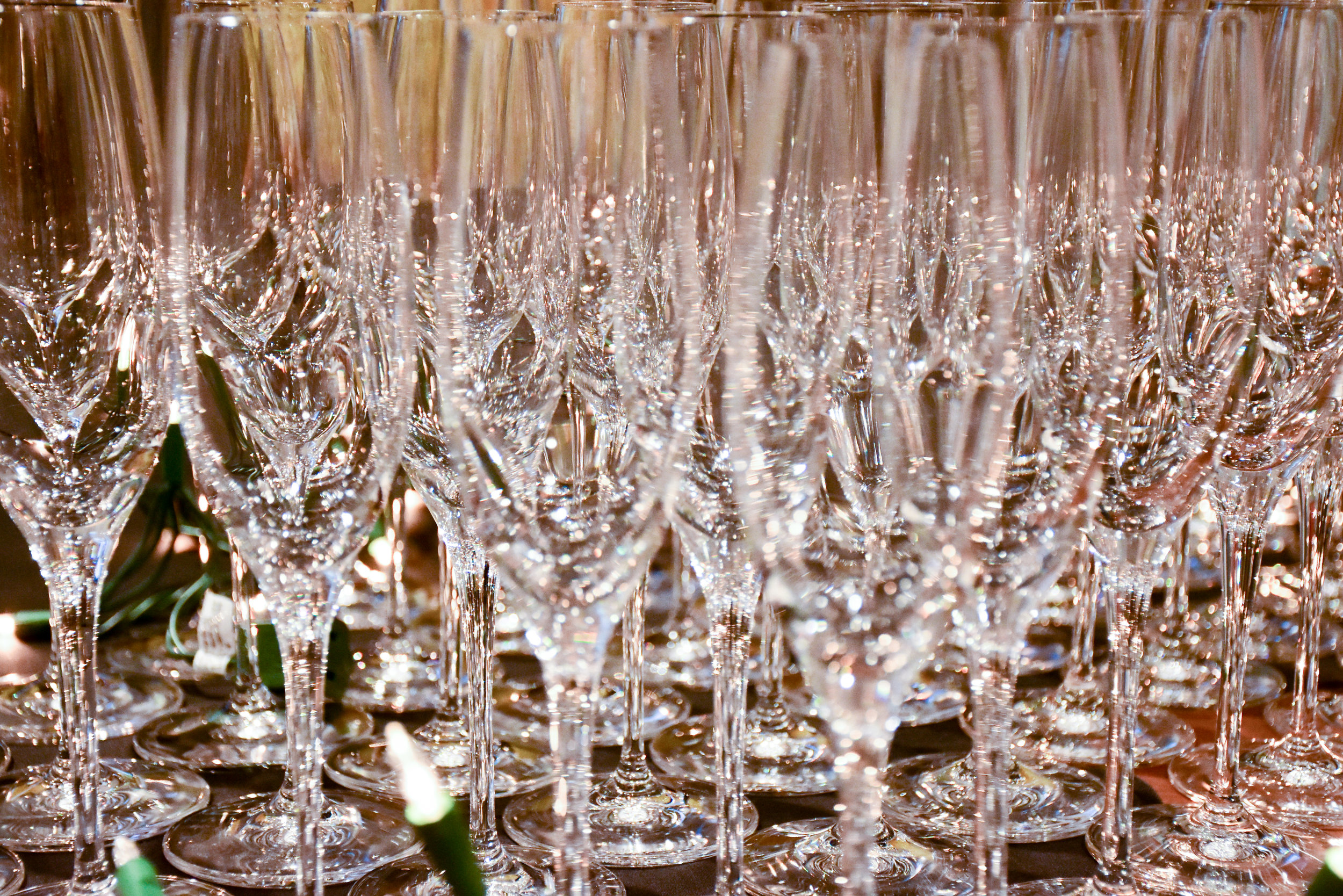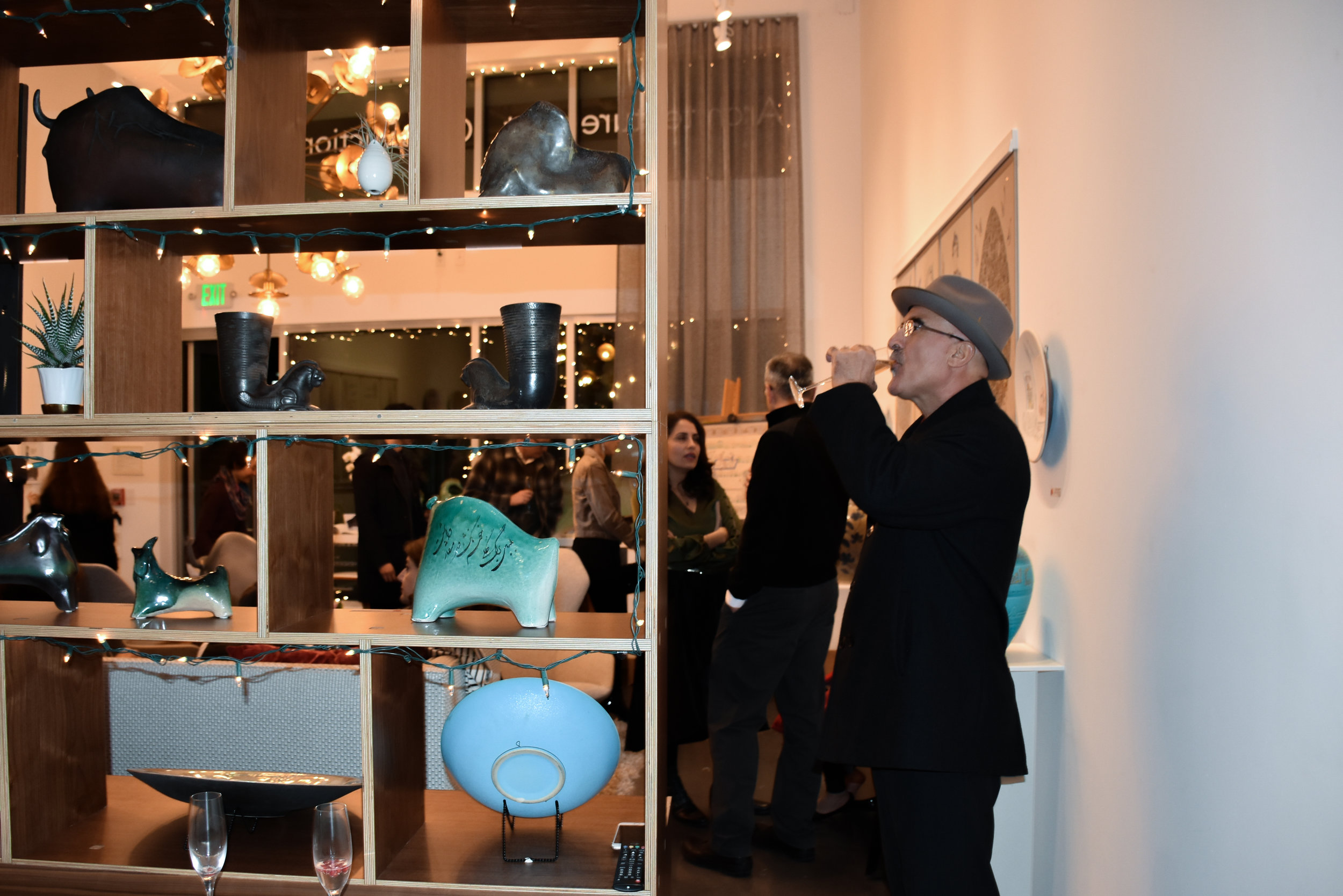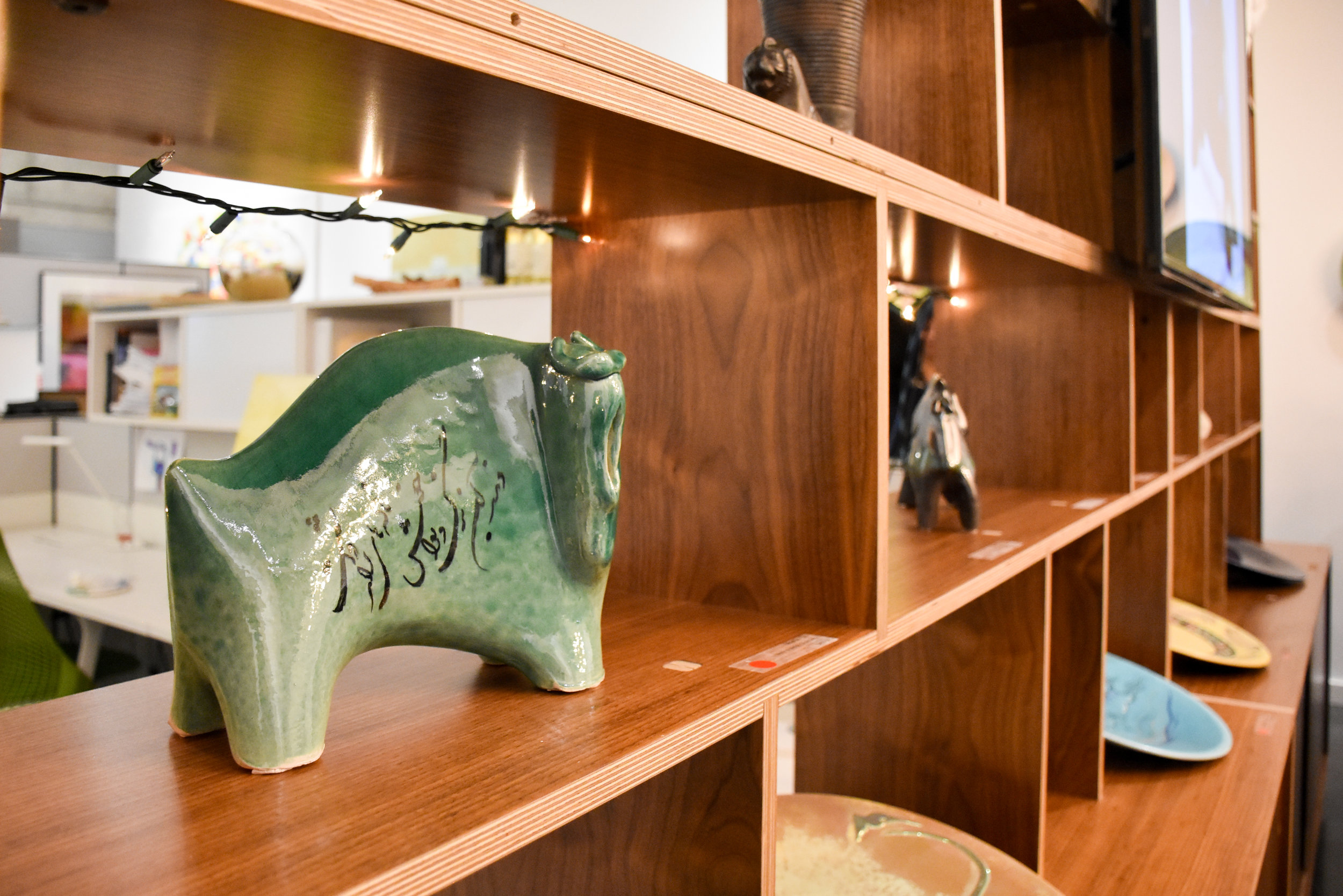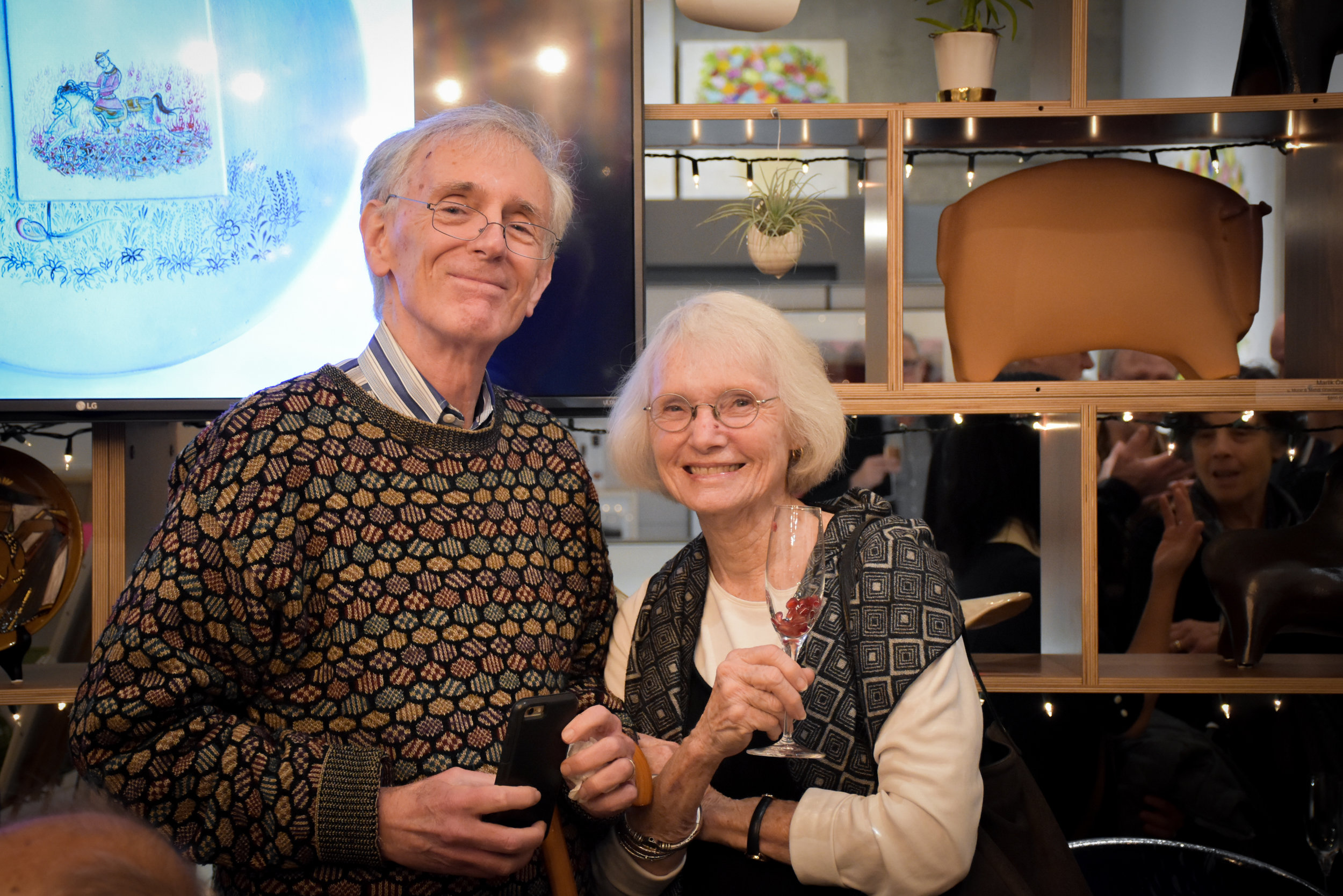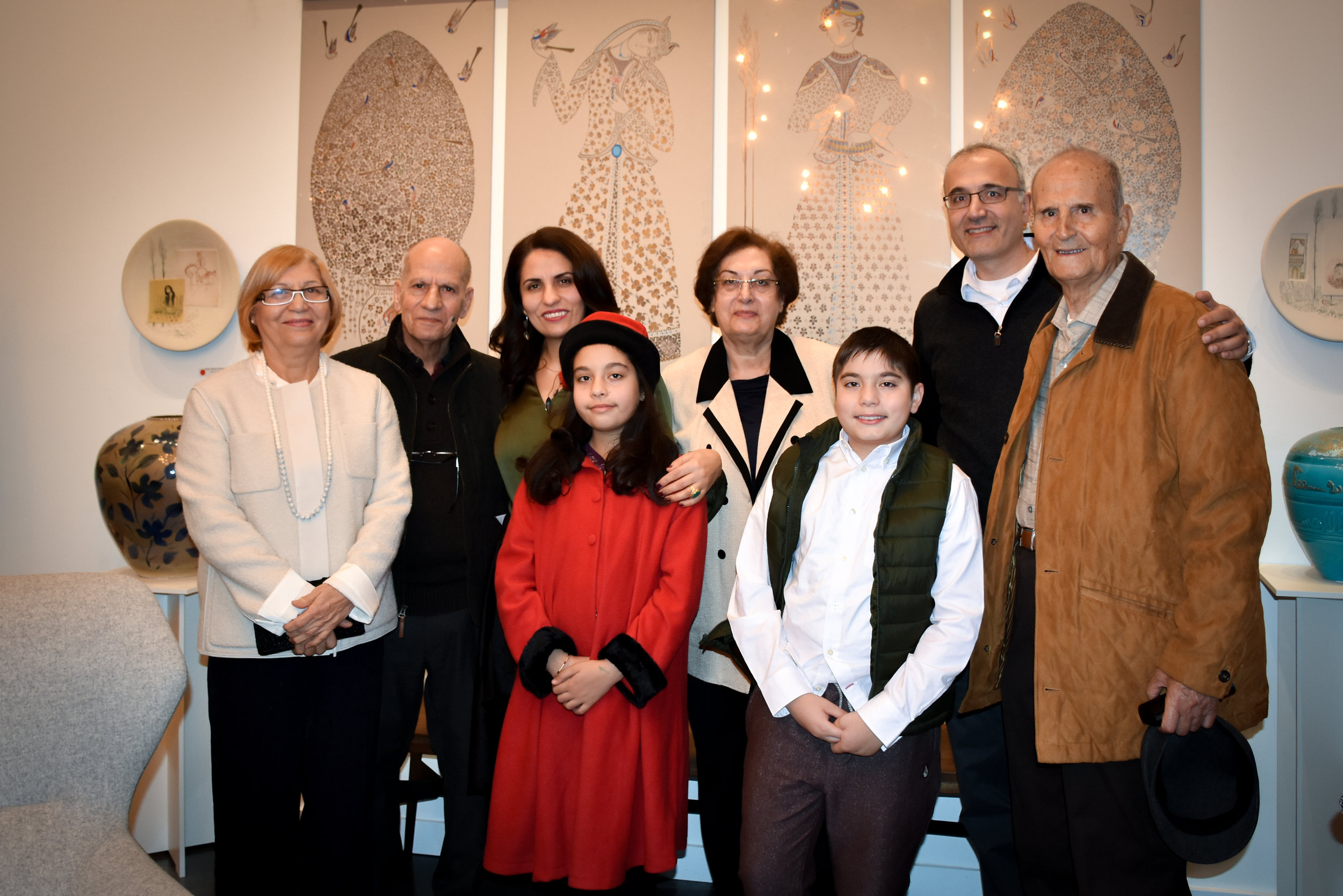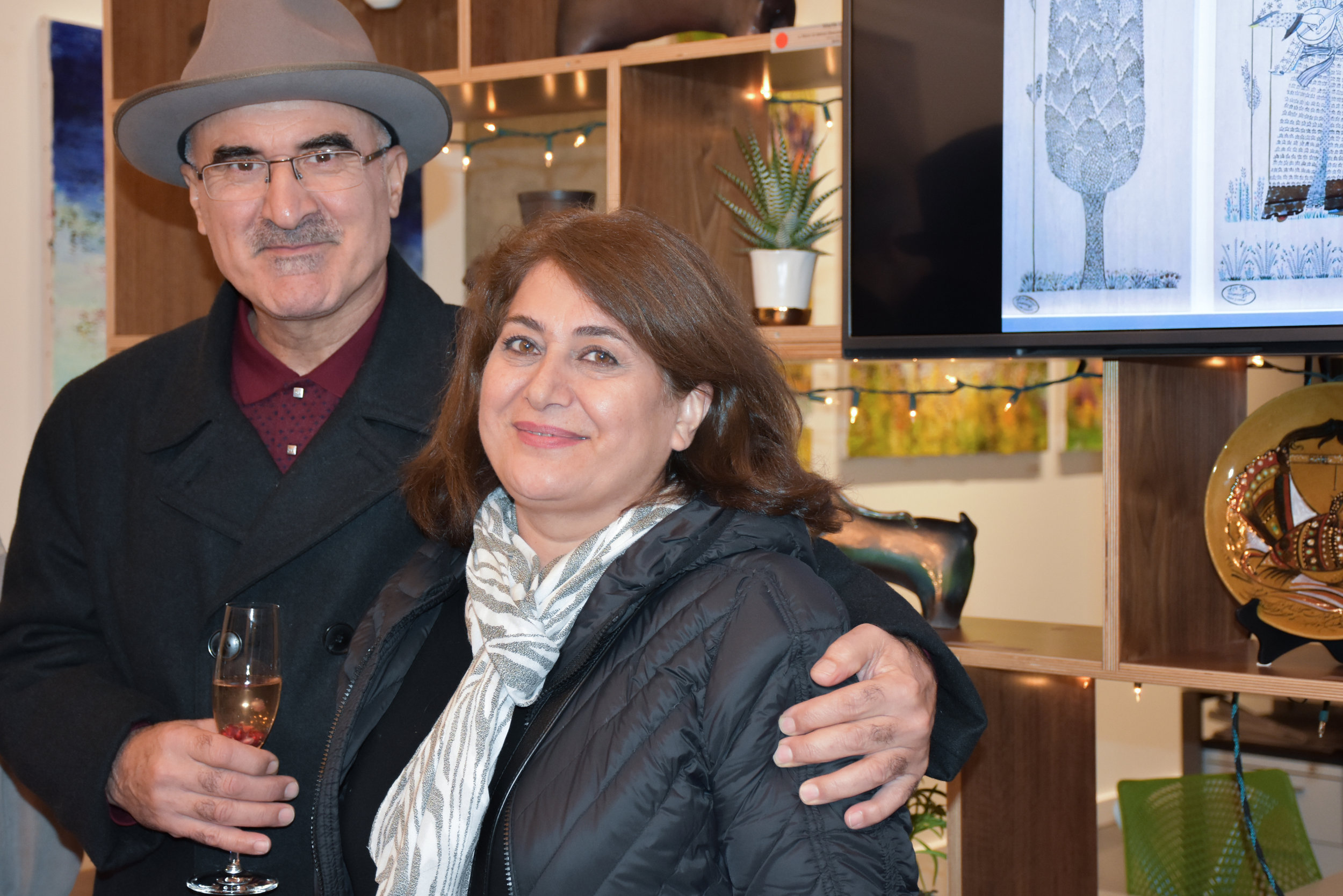This month, our moment of inspiration is our upcoming featured artists, Monir and Mehdi Ghanbeigy, two highly acclaimed ceramics artists from Iran. SZ Gallery will be hosting their very first exhibit in the United States, titled “Persian Garden,” starting this November.
I was fortunate to have the opportunity to meet with Monir and Mehdi in person last week at their daughter Kimia’s house, and I learned all about their creative process, their beautiful artwork, and the cultural background of their art. Their collaborative spirit, down to the smallest details of their intricately designed projects, was what I found truly inspiring.
Monir & Mehdi Ghanbeigy
Monir and Mehdi Ghanbeigy are a married couple from Tehran, Iran who have been creating art together since 1970.
“I started art before I met him, but then when I met him, it became my profession,” Monir explained. “We met and I thought we could produce art together.”
“And then she fell in love with me,” Mehdi added.
With a laugh, Monir responded, “Oh, no, it was you who fell in love with me!”
“It’s an on-going debate,” Kimia clarified for me, laughing.
From their humble attitude, you would never guess these two are among the most acclaimed ceramic artists in Iran. Starting in 1970, when they began creating art together, they lived in Iran before moving to England for further training at London and Canterbury College of Art.
They started with painting, but once they returned to Iran in 1980, they began their own workshop to begin a career in ceramics. Their training in England deeply influenced their work upon returning to Iran, and together, they developed a novel style in ceramics influenced by both modern art as well as the very rich traditions of Persian pottery. As a result, many of their works have been developed and crafted in close collaboration.
In Tehran and Shahrood, Monir and Mehdi also taught sculpture, ceramics, and painting at
several universities, serving as project advisors for graduate students. Monir and Mehdi have traveled around the world exhibiting their work in France, Italy, Germany, Moscow, China, Saudi Arabia, Sri Lanka, and England. Their work can be found in museums and art galleries all over the world, including a permanent installation in the Contemporary Art Museum of Iran.
At their private workshop, Monir and Mehdi still host interns and art students completing their Masters theses, teaching them about their material of their ceramics, the design of the ceramics, and the painting as well. Even when they aren’t working with students, the couple spends most of their day in their workshop.
“They’re there every day, from 6 in the morning to 9 at night!” Kimia exclaimed.
Art Infused with History
As much as they collaborate on their ceramic pieces, Monir and Mehdi have distinctly different painting styles. While observing the art hanging in Kimia’s home, Monir pointed out which paintings were hers and which were Mehdi’s – and this was the only time I could see their separate influences. Monir’s paintings have a slightly more abstract, almost minimalist form, capturing the silhouettes and outlines of feminine subjects such as women, chickens (more specifically hens), and flowers.
We moved upstairs to view some of Mehdi’s paintings, as well as the large ceramic panels that will be featured in the SZ Gallery next month. The majority of Mehdi’s paintings were in the Persian miniature style, drawing on the rich history of Persian art. The Persian miniature style itself was popular between the 13th – 16th century, getting its name from the tradition of painting the images inside books. The subjects are often based on cultural stories or literature, with much attention paid to the details of the figures and the background, too.
When asking Monir and Mehdi how they would describe Mehdi’s specific painting style, Mehdi and Kimia explained it as “classical Persian miniature,” while Monir argued it was of the “postmodern style.” Speaking amongst themselves for a moment, it was clear this discussion of genre was much bigger than a simple question not easily answered, though they all agreed that Mehdi has a more modernized take on the classic style.
Discussions like these are the norm for the artistic duo. Mehdi has been studying and painting miniatures since he was nine years old, and Monir also has a passion for Persian history and art history, making for exciting discussions while they create art together.
Mehdi’s paintings, both on canvas and on the ceramics, often includes symbolism; several of his pieces have birds, which he explained represent freedom, peace, and pureness, as well as majestic white horses that represent love and messengers of peace. The Persian Garden, a painting by Mehdi that has inspired the theme for the show at SZ Gallery, is a life-like representation of figures relaxing in the garden of a palace; as a way to welcome guests into the space at SZ Gallery, this painting will be placed toward the entrance.
Creating Every Tool by Hand
Starting in November, a selection of Monir and Mehdi’s ceramic work will be the focal point of their show, “Persian Gardens.” Each sculpture, plate, panel, and vase has its own unique history due to their collaborative and intricate experimentation process – all which has been developed by Monir and Mehdi themselves.
In their ceramics work, they incorporate kaolin into the base of their clay materials, creating both ceramic sculptures and porcelain pieces. Through their own experimentation, they’ve created the formulas of their clay, colors, and glazes all themselves, testing the cooking temperatures to find the best combination of materials for that temperature.
Monir provided more background on how each of their ceramics pieces are created: “If we want to make a piece, we have to do 30 – 40 experiments. We mix the elements and materials together, try it at different firing, change the material, adjust the kiln’s atmosphere and the temperature curve, along with the fuel.”
For just their large ceramic panels that will be on display in November, it took them about 50 different experiments to get the recipe just right. They tried 50 different cooking times, with about 7 test samples per day.
“They’ve done so much testing that they’ve basically made and built everything that exists in a ceramics shop in a Western country,” Kimia explained. “Since they couldn’t simply buy these tools off the shelves in their own country, they had the opportunity to develop the tools, colors, and glazes themselves.”
They’ve even constructed their own kilns; their personal kiln collection includes eight kilns, several that run on oil, gas, electric, and combinations of these. And they didn’t only build small kilns; they built very large ones up to 30 square cubic meters.
One could say that they’ve taken an almost scientific approach to their art, like a professional chef would do with food. Monir emphasized how much they take into account the temperature curve, the atmosphere of the kiln, and the formula of the material itself, testing each piece for durability by cooking it in different ways. On display at their upcoming exhibit will be a porcelain vase that was fired at temperatures up to 2500 degrees Fahrenheit, making the vase very strong.
Durability of the product itself comes down to the precise formula and methods that Mehdi and Monir have developed. Kimia told me that the couple regularly gets the question, “How is it possible to produce ceramics at that high of a temperature?” In their industry, it is unheard of to fire ceramics at extremely high temperatures, so they often have to explain that their unique formula for the material itself is created for a certain temperature curve and atmosphere in the kiln.
A Beautiful Collaboration
Before leaving Kimia’s home, I had to ask the couple: How does a married pair of artists create art together for so long?
“They have so many back and forth discussions!” Kimia said as they shared a laugh, while Mehdi smiled and only said, “It’s a secret.”
“Even if they happen to disagree, they come to an agreement at the end of it, and something beautiful is produced,” Kimia said.
Both Monir and Mehdi agree wholeheartedly on one thing: it’s been working successfully for almost 50 years, as long as they’ve been married.
“They are always working together,” Kimia said, and shed a little more insight into their unique creative process. “One of them starts the work, the other person provides opinion and suggestions, sometimes touching the work and modifying it with permission from the other, with a lot of discussion.” If one of them feels the piece doesn’t have “the look” they’re aiming for, the other will often jump in.
They showed me a beautiful turquoise-colored bowl with a splash of rust coloring. The couple explained that Mehdi will often do the design, creating a plaster model, while Monir will do the detail work.
But at the end of the day, it is difficult to say precisely which exact part of the final product is from Monir or Mehdi – they work together so closely that their contributions are seamlessly tied into the piece.
It is this type of tightly woven collaboration – one based on trust and mutual respect – that is incredibly inspiring to see, especially when the result is breathtaking pieces that inspire conversations about culture and history. Their perseverance to create their own tools and materials – to keep trying, again and again, until it’s just right – makes their collaboration all the more beautiful.
The time, patience, and level of care that they put into each and every ceramic piece should be a reminder to all of us to be more thoughtful with our own work, no matter what industry we are in.
We’ll be featuring a follow-up post with more about Monir and Mehdi’s artwork and details on their opening reception, so stay tuned!






































